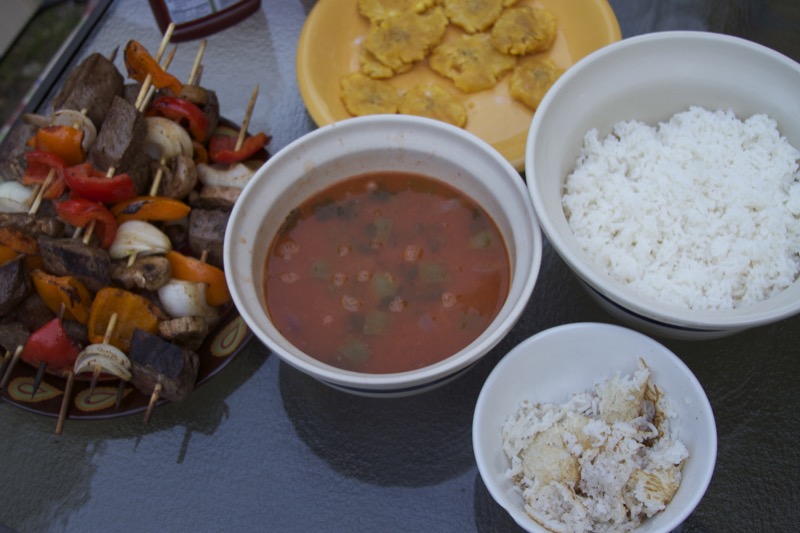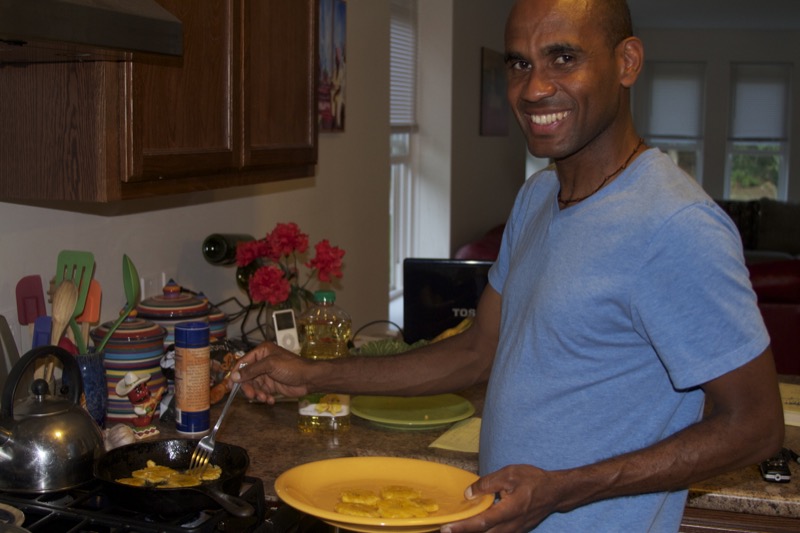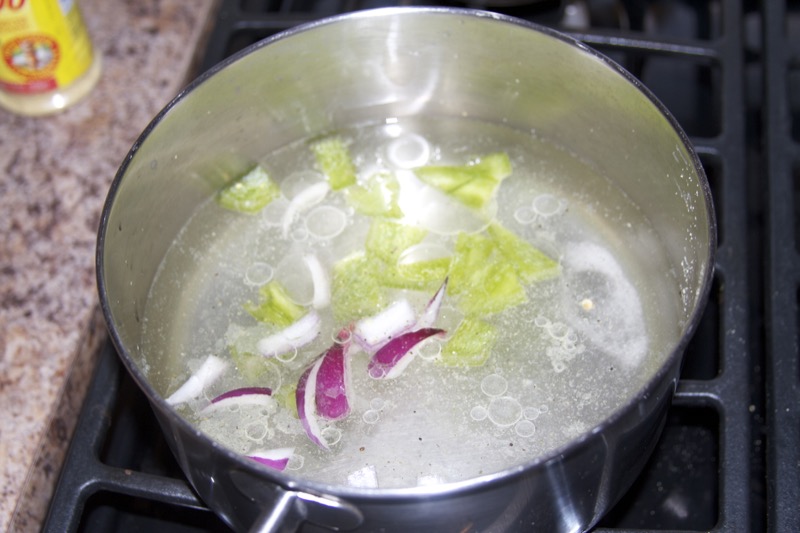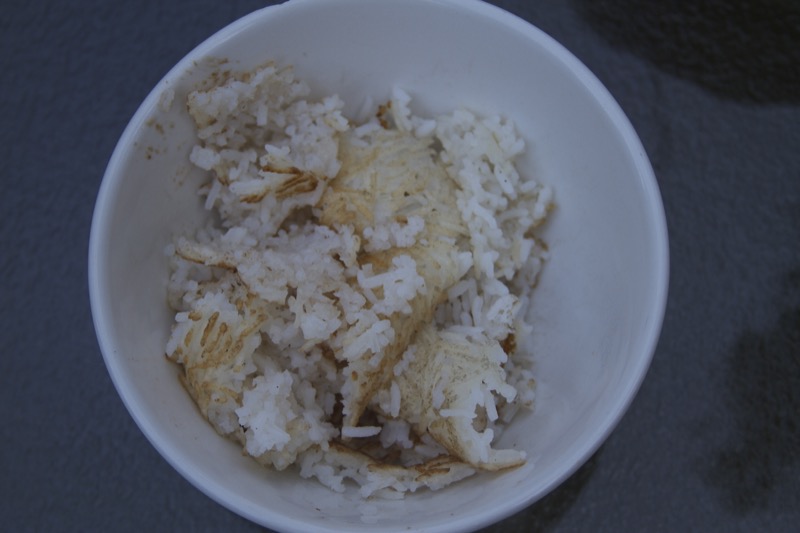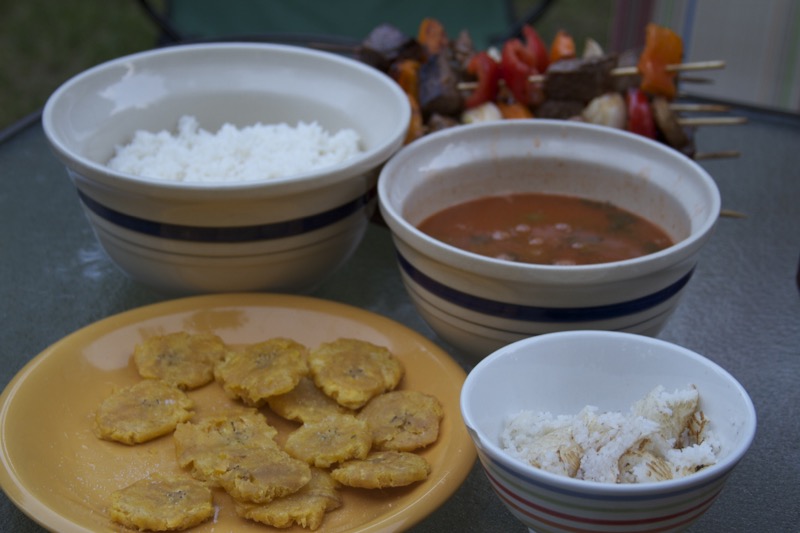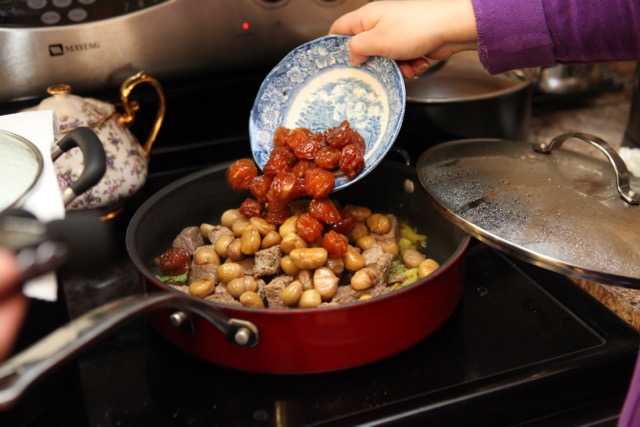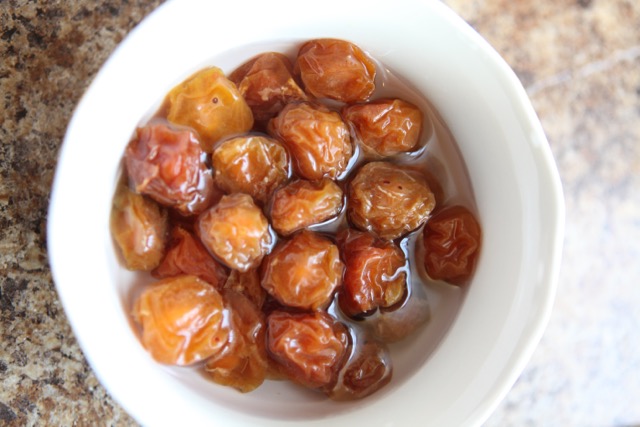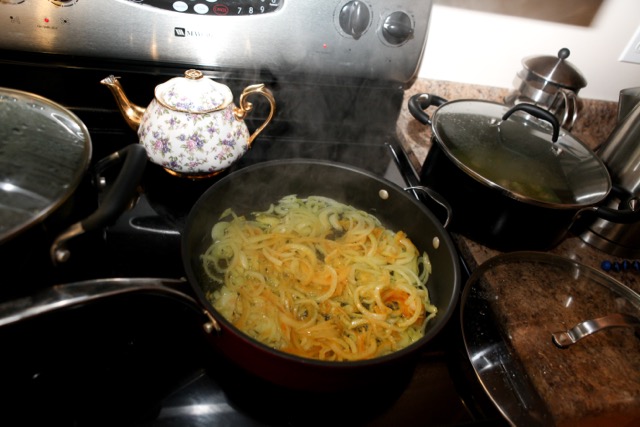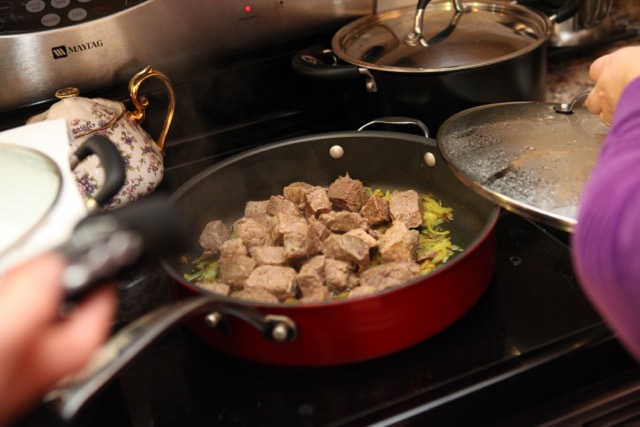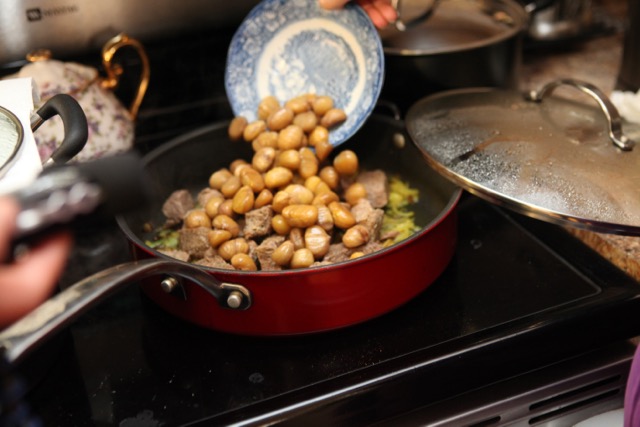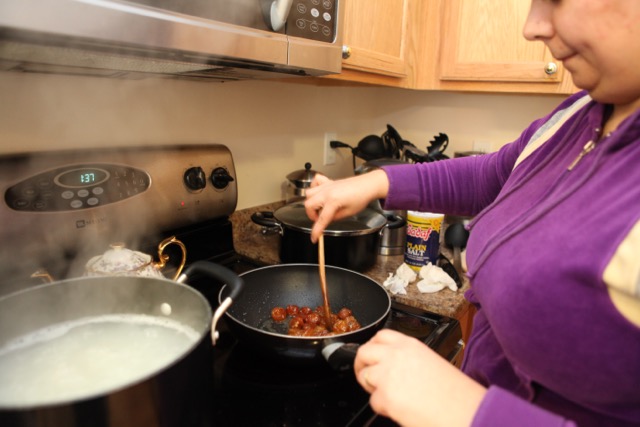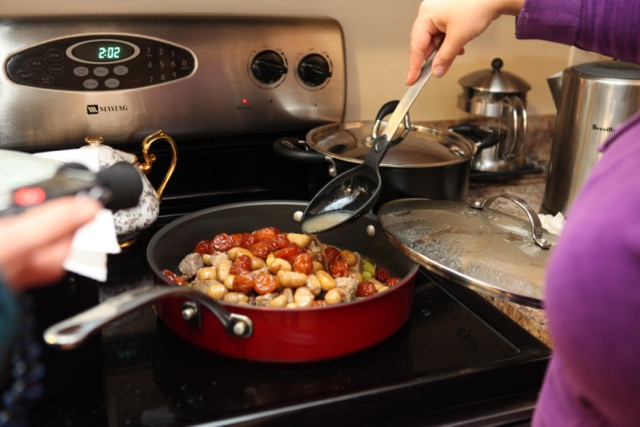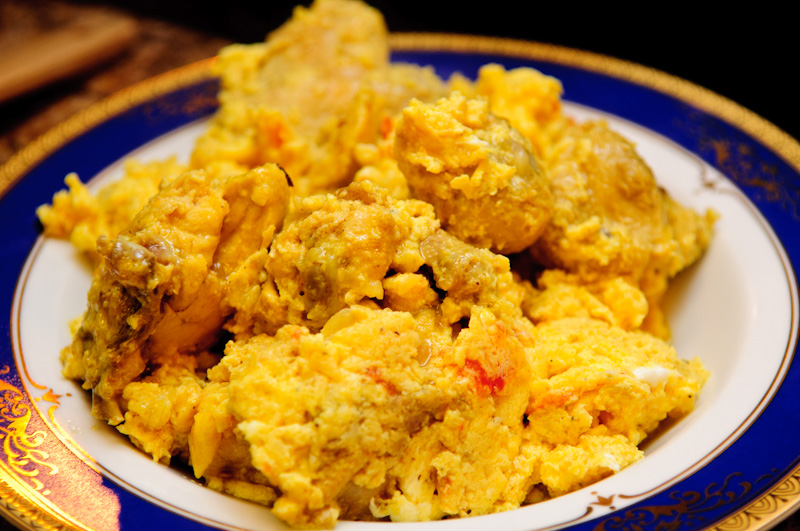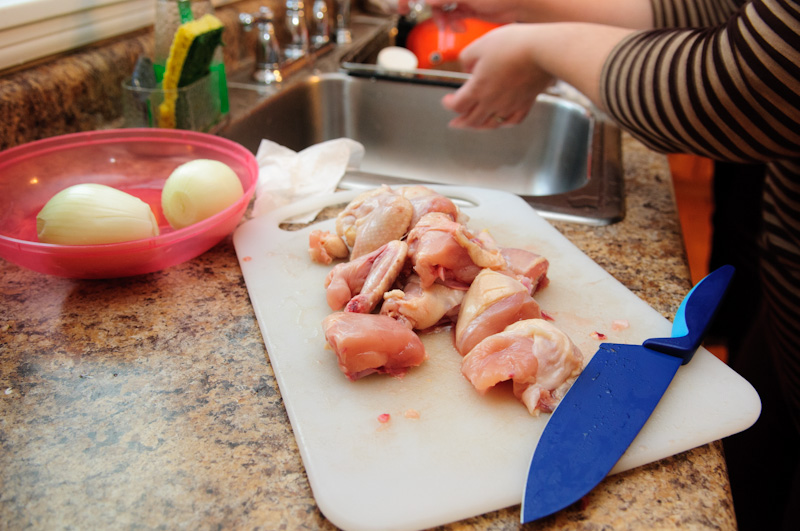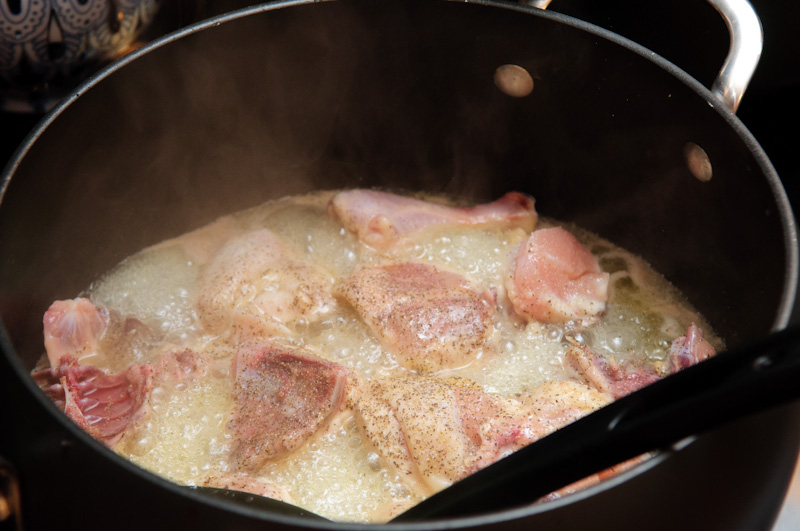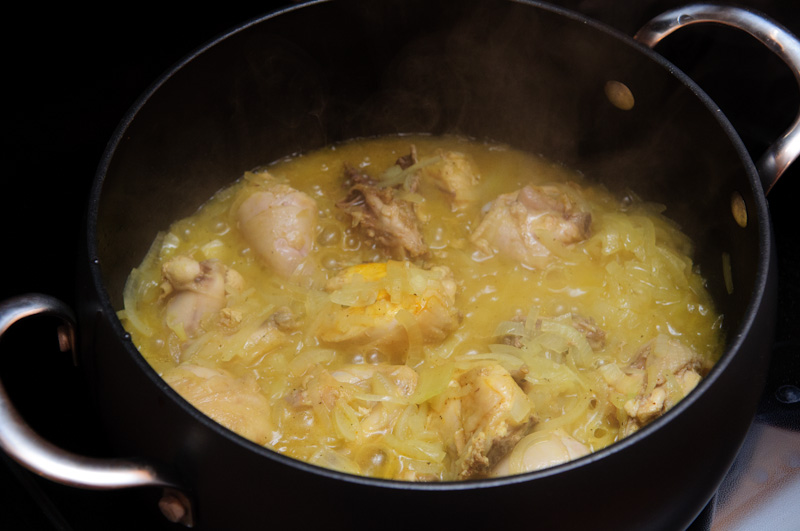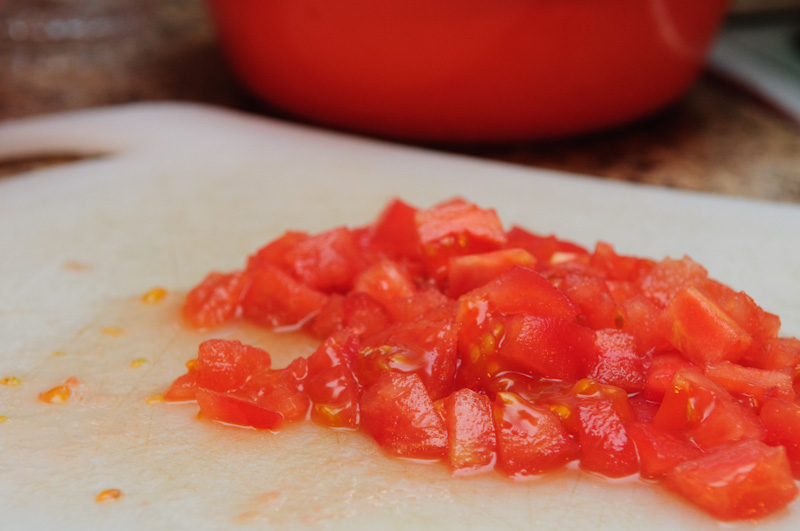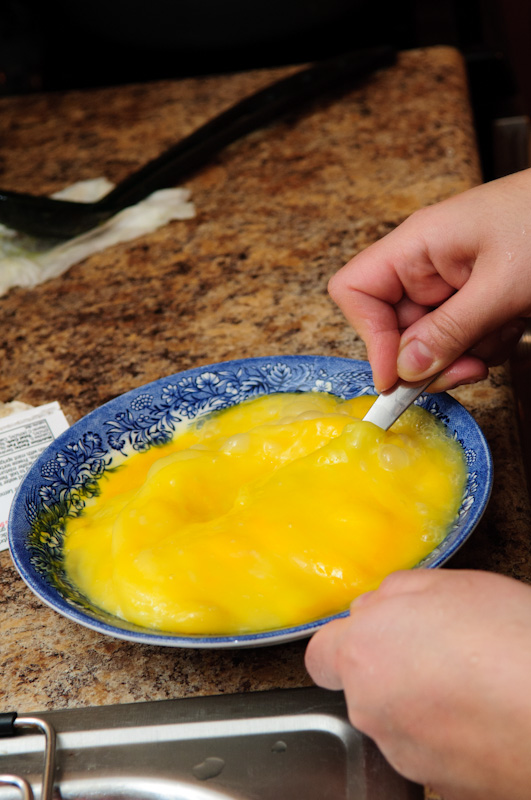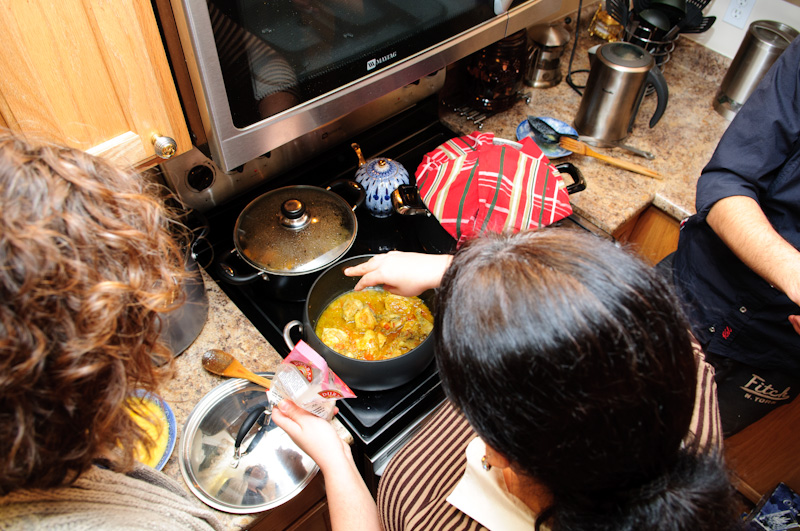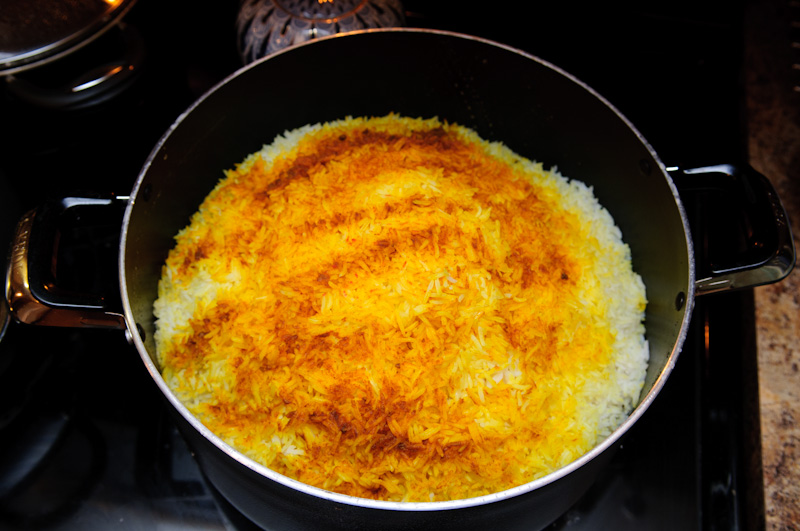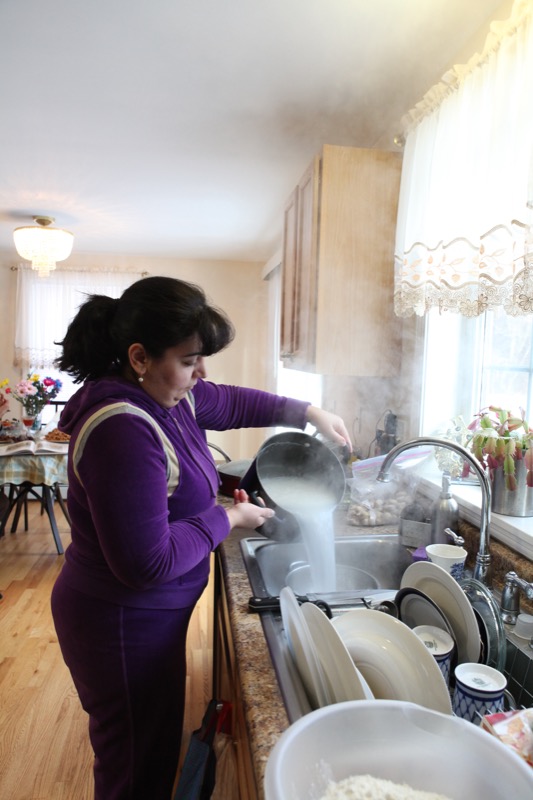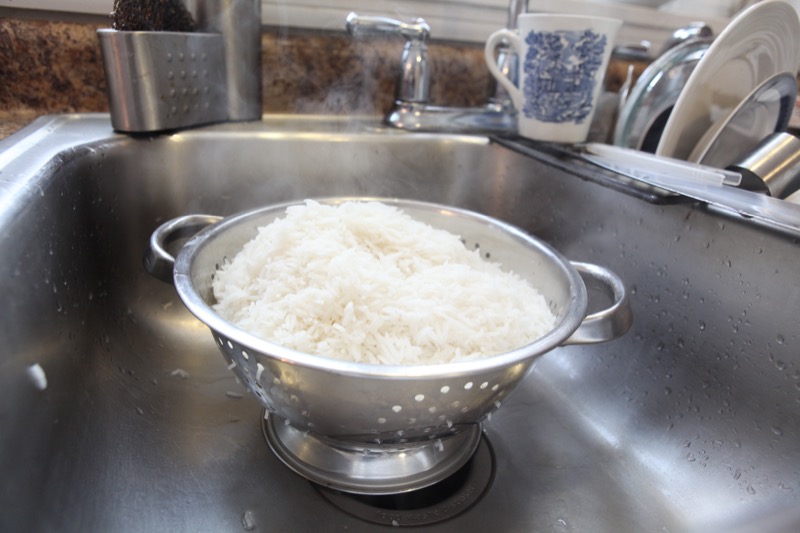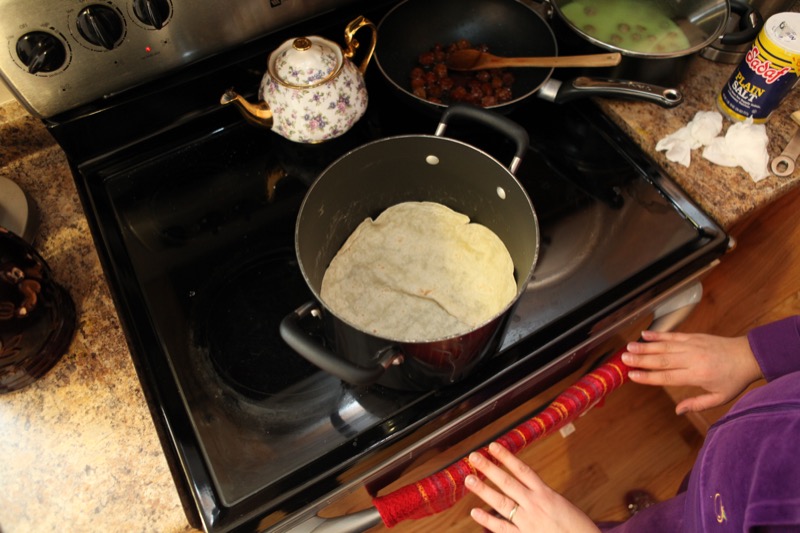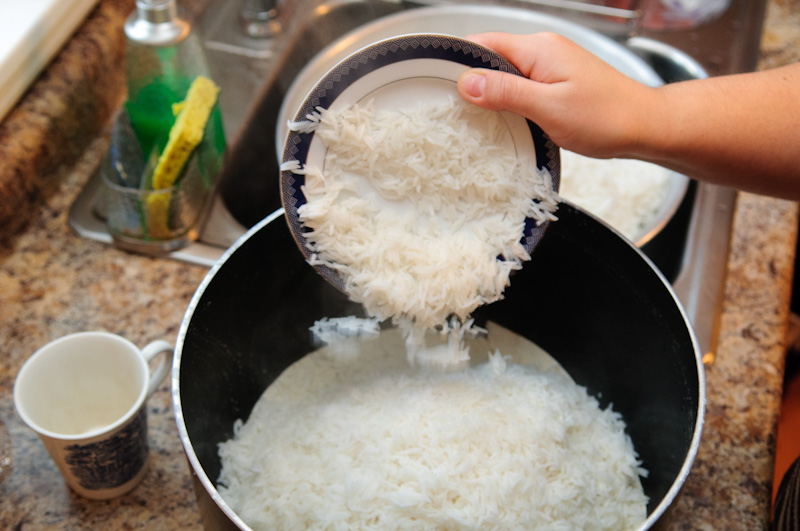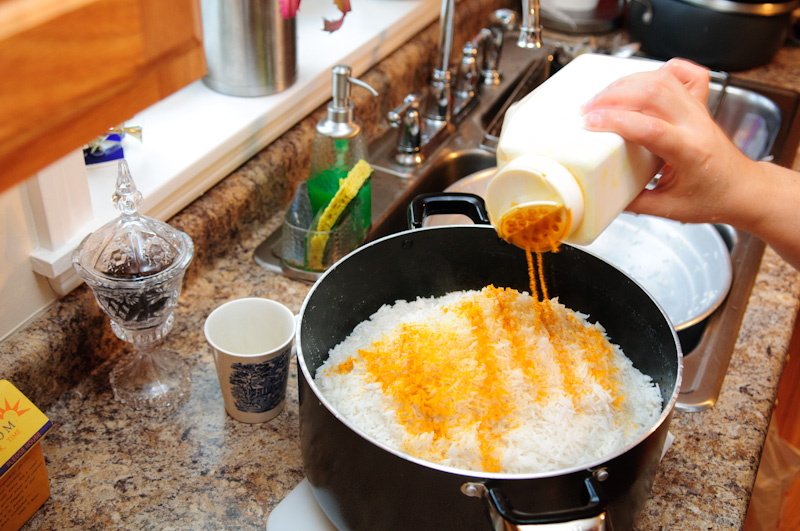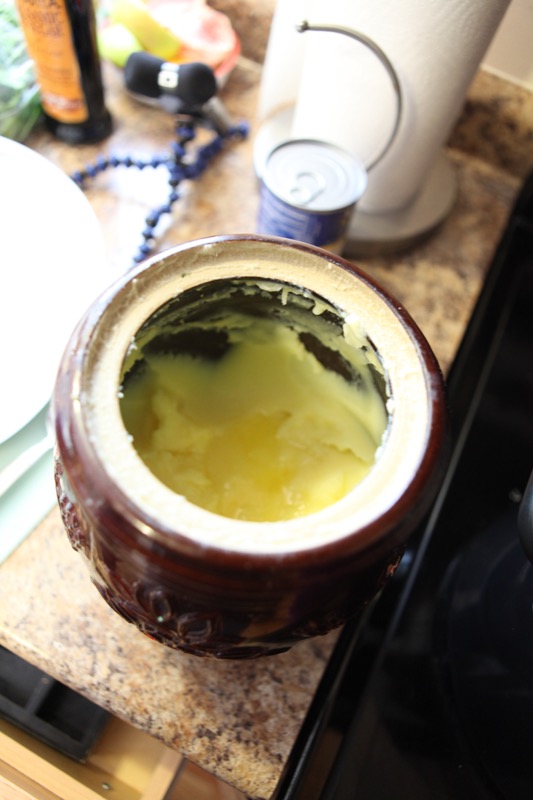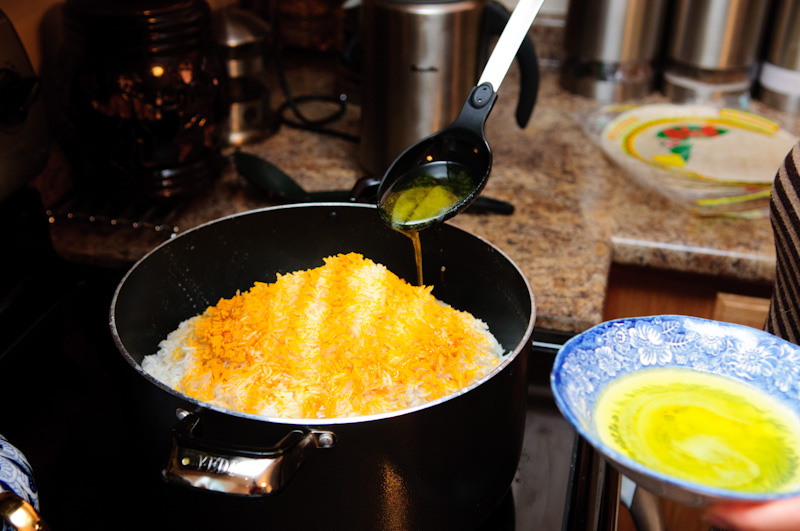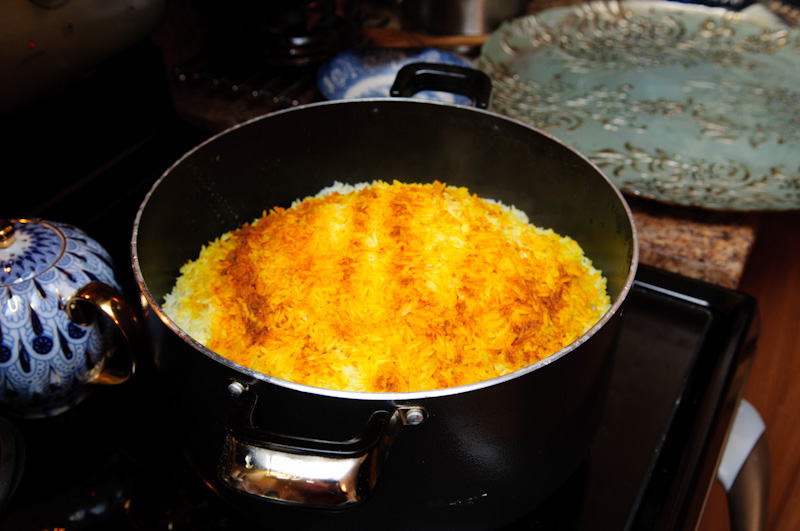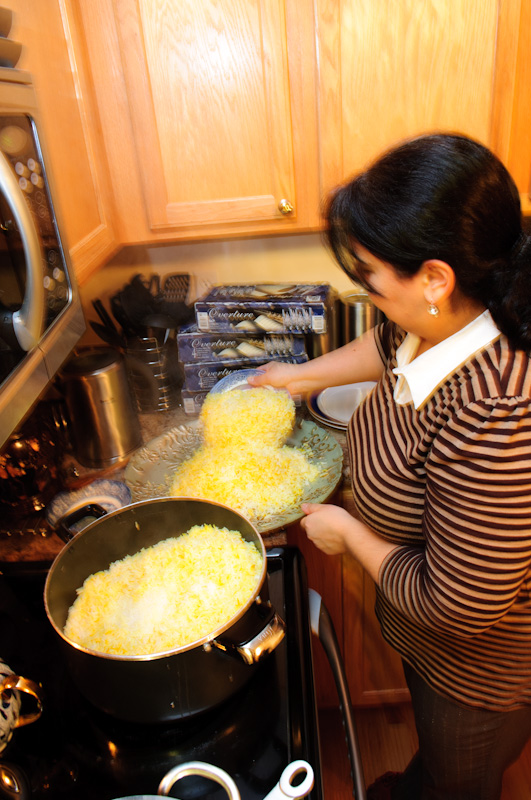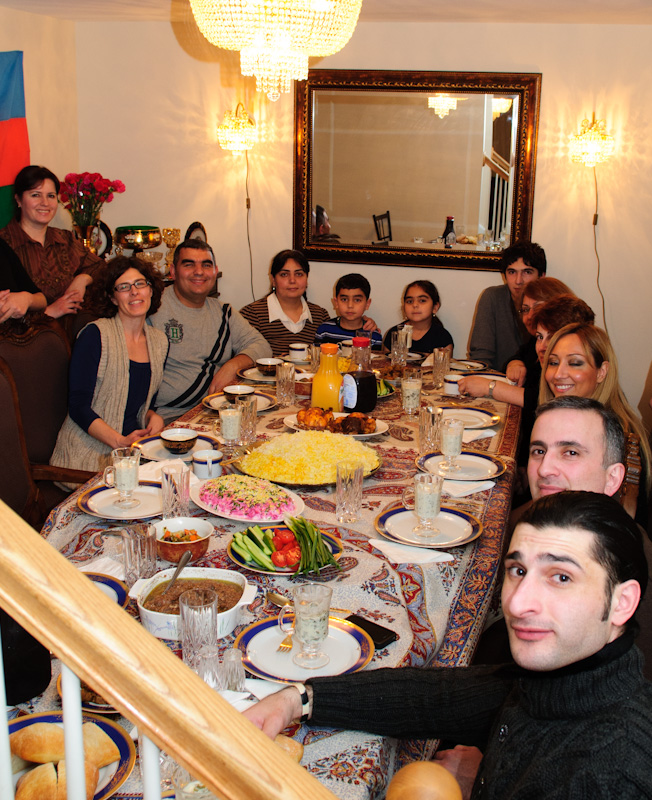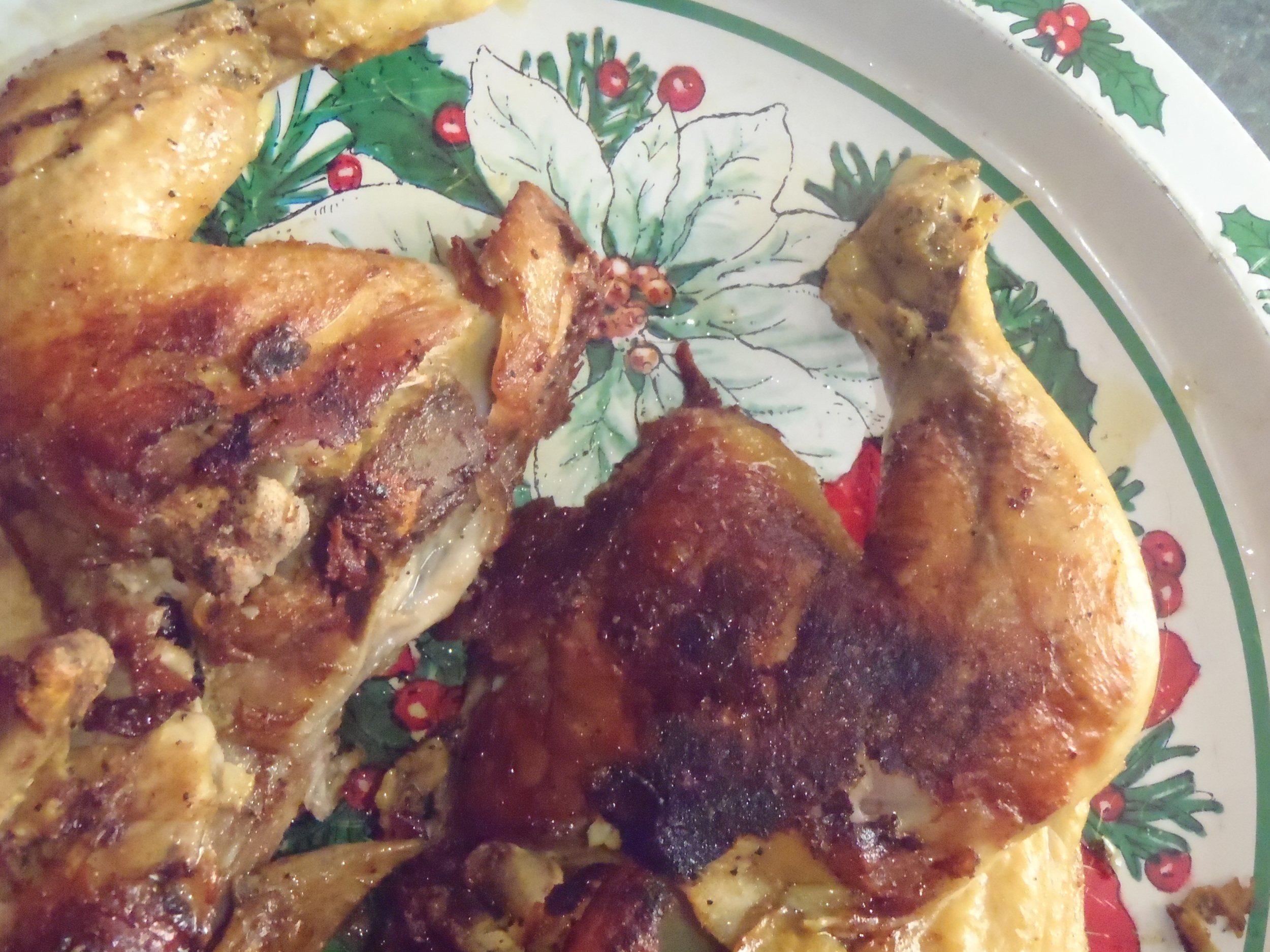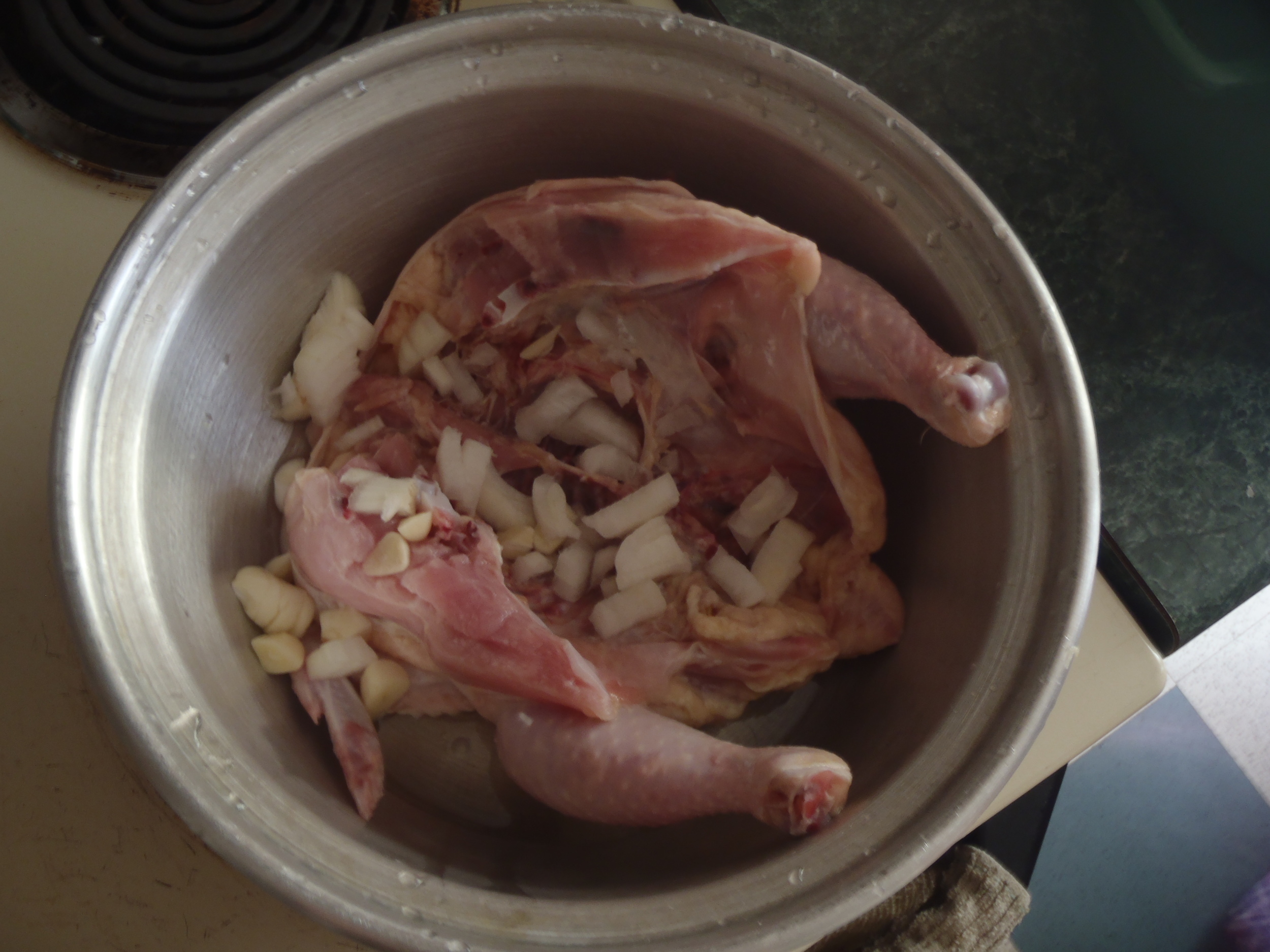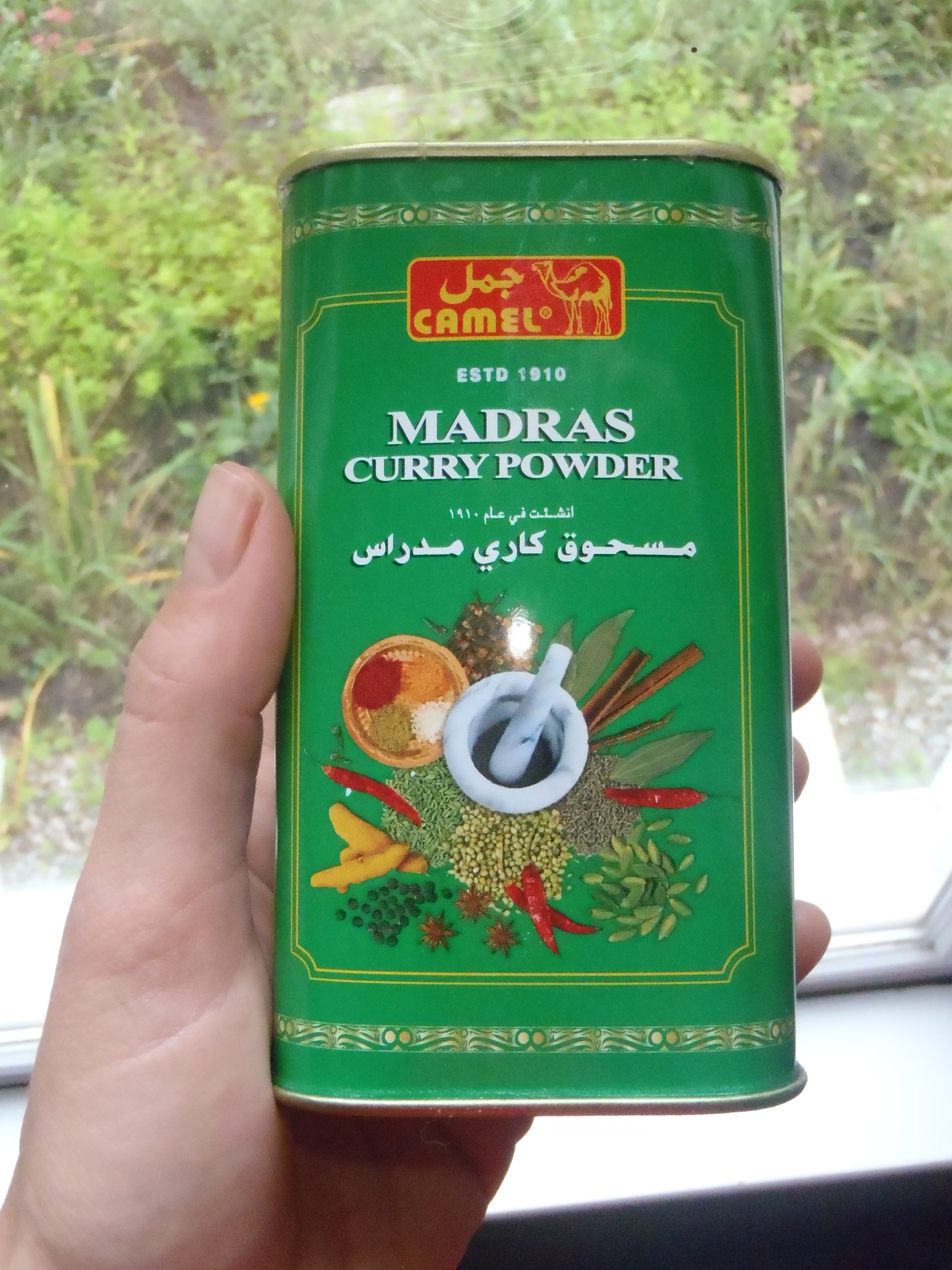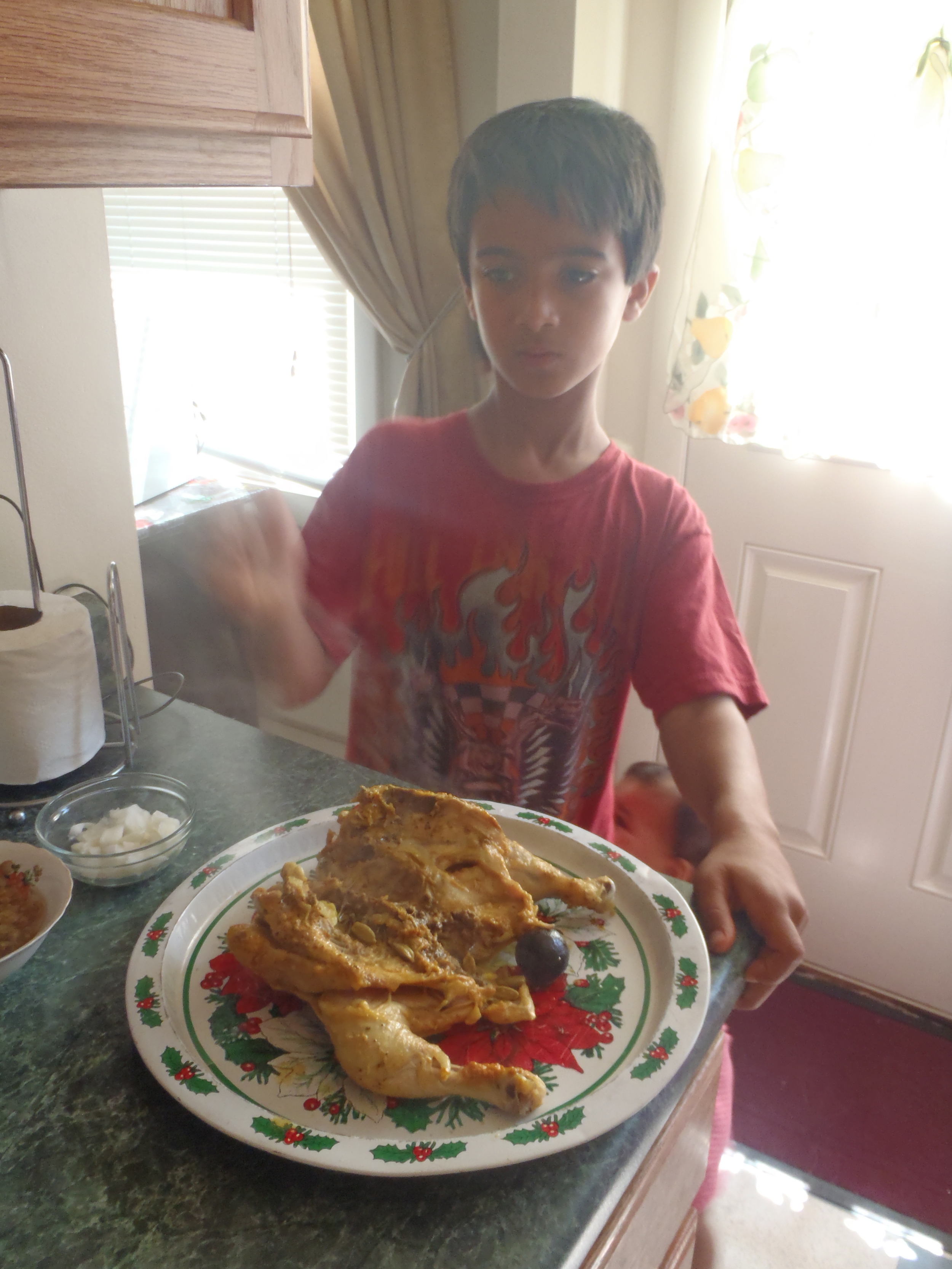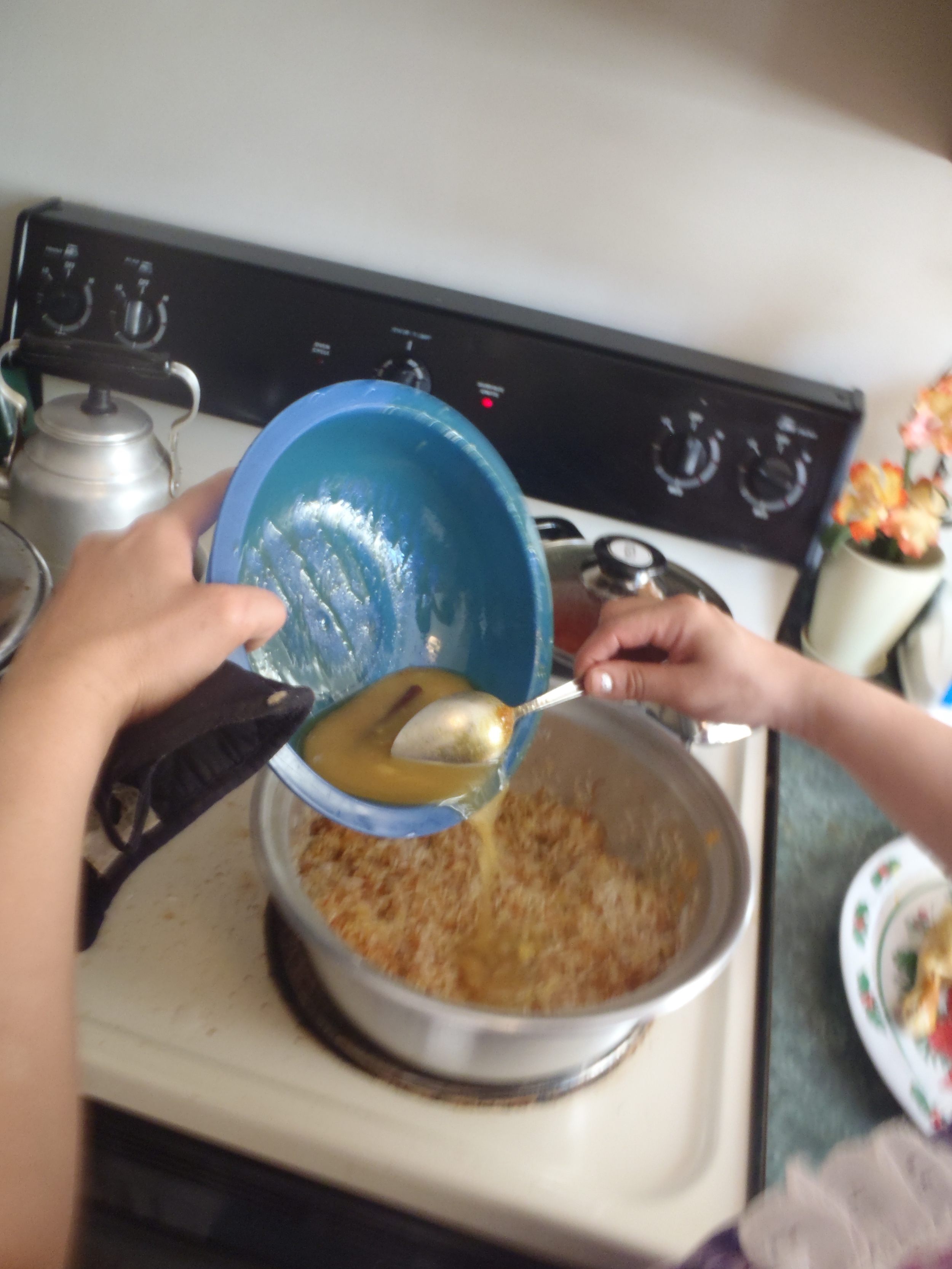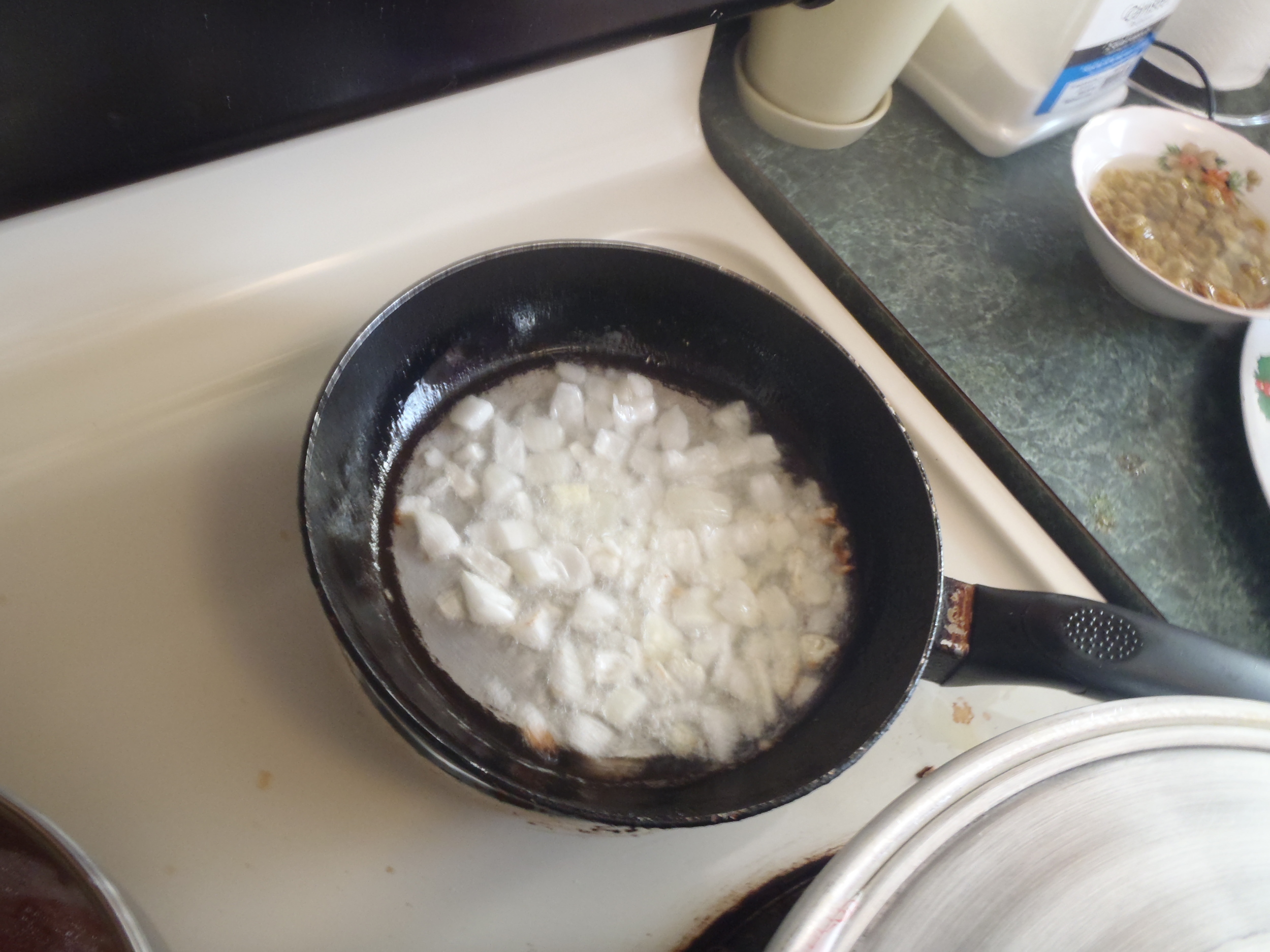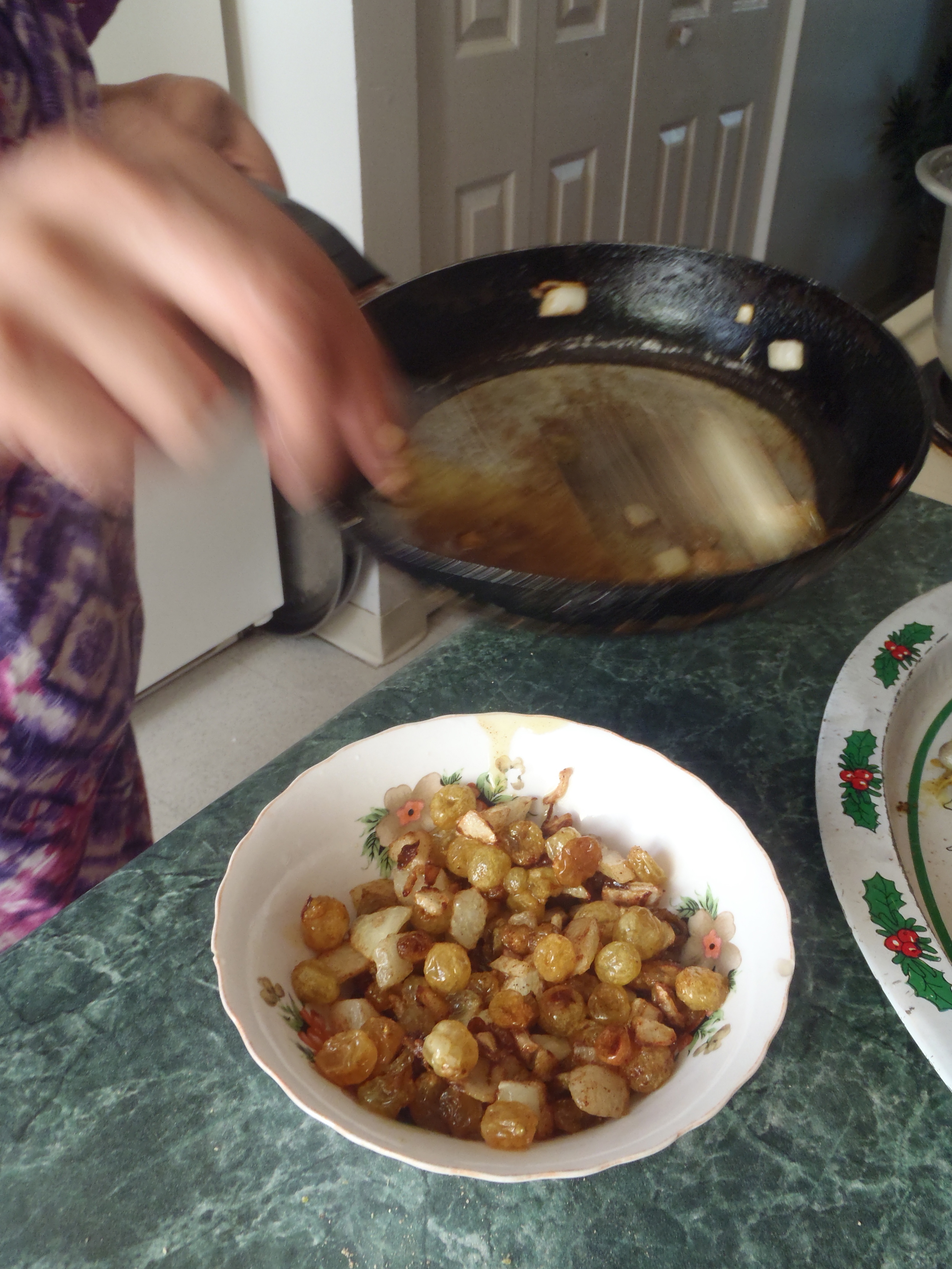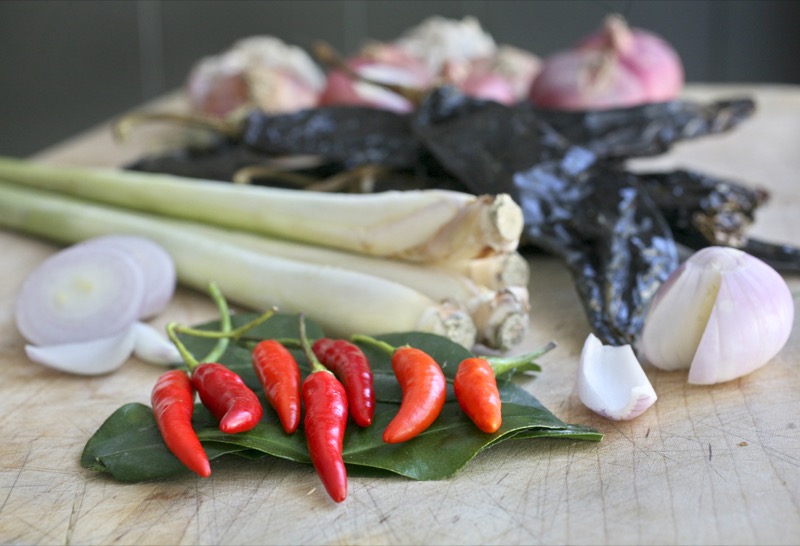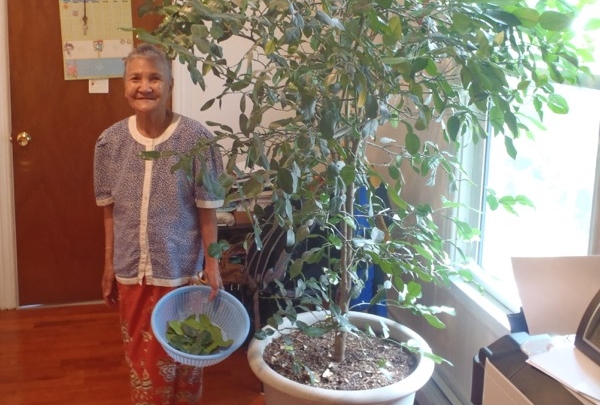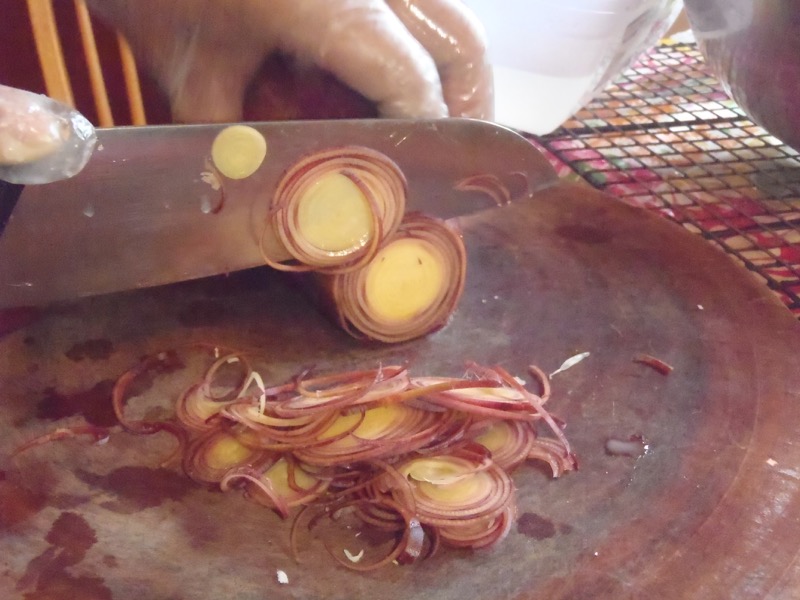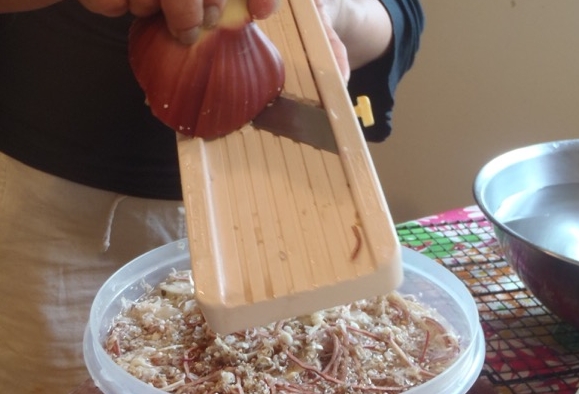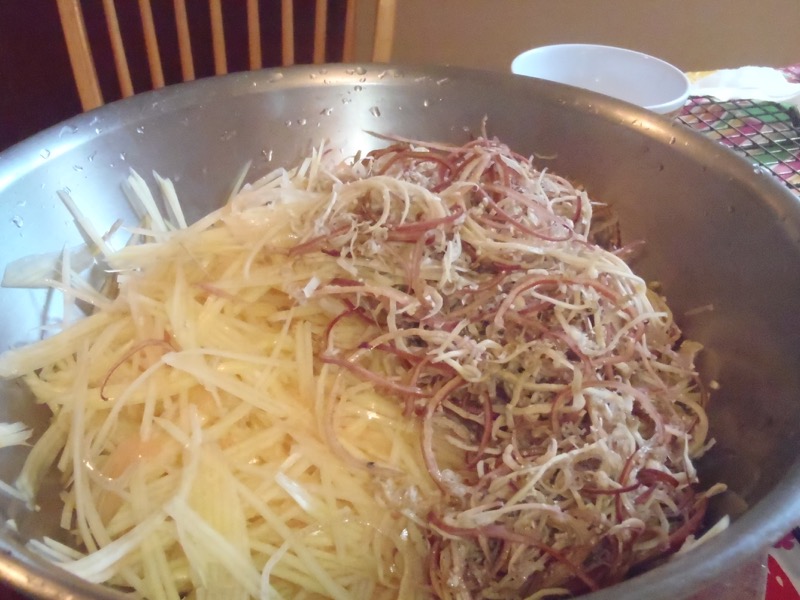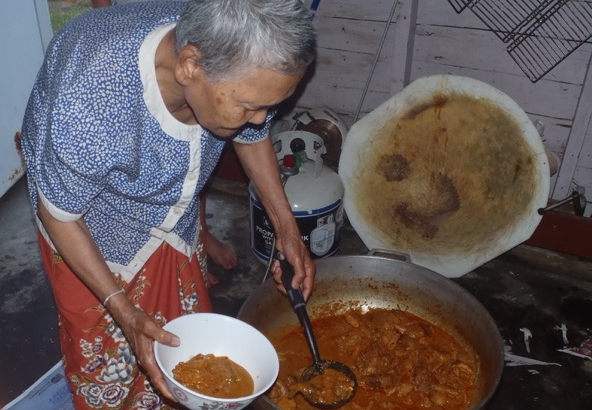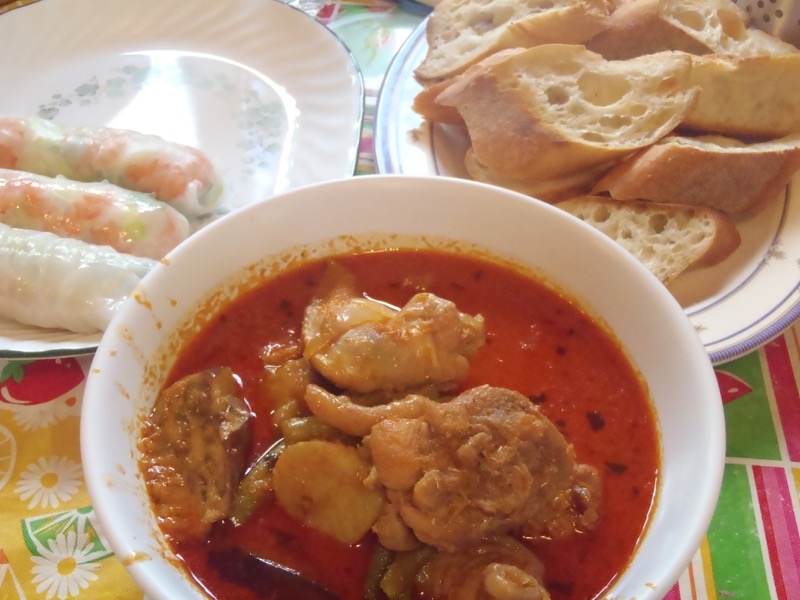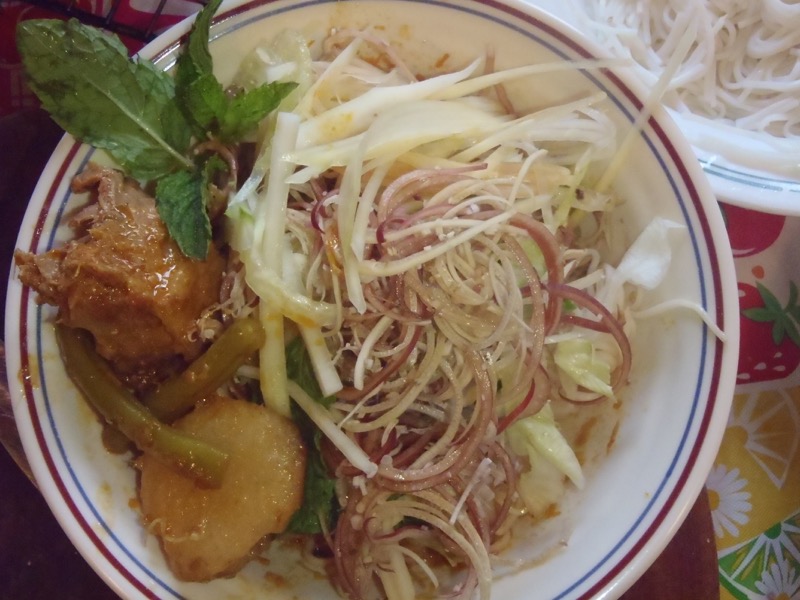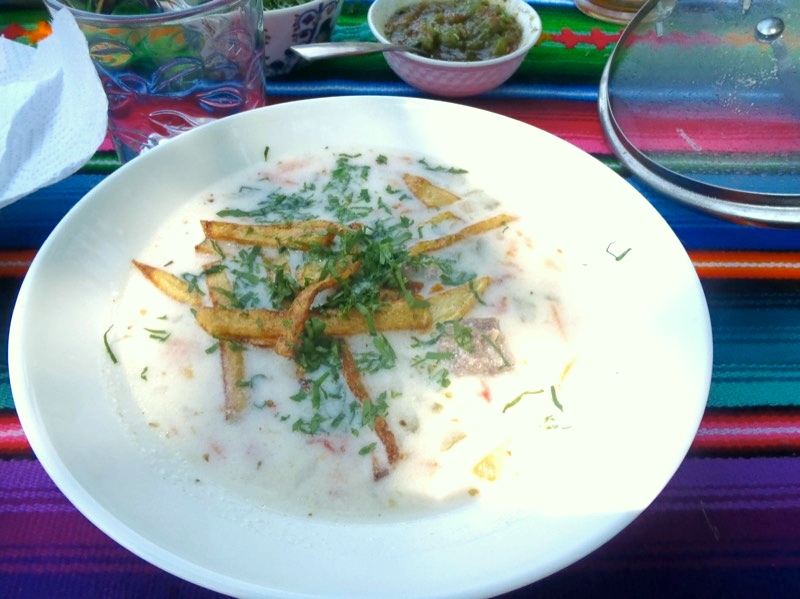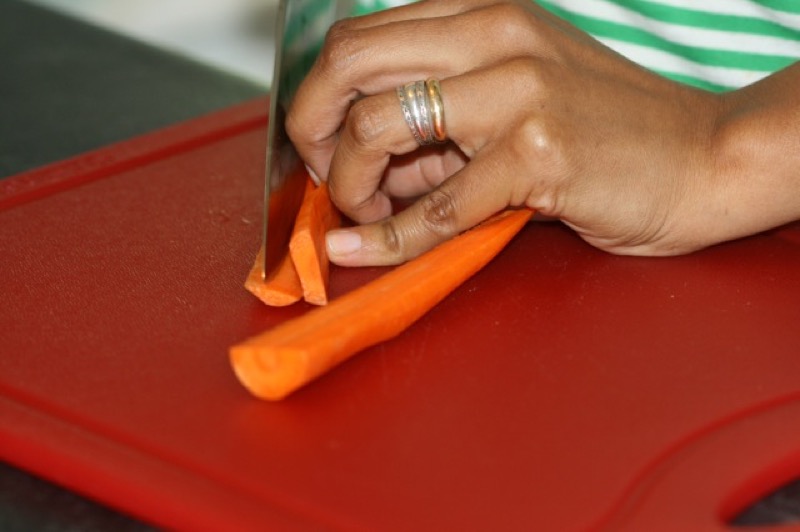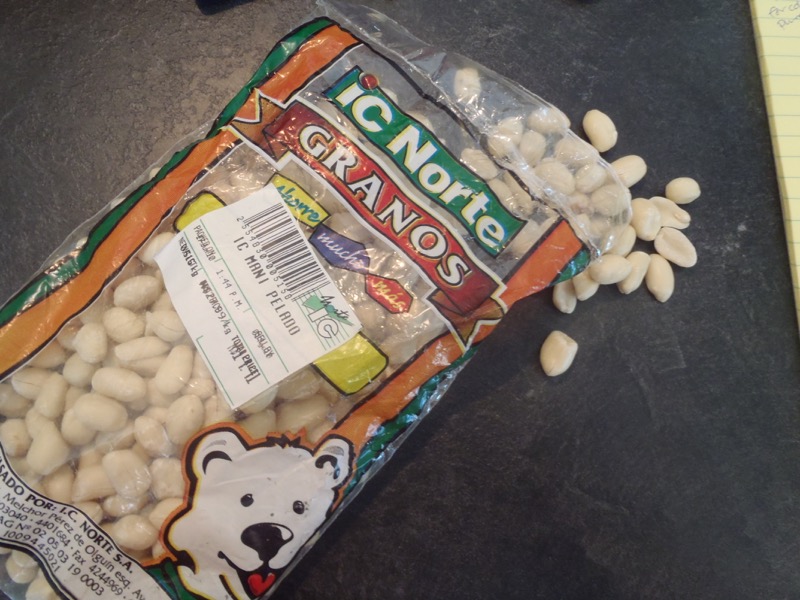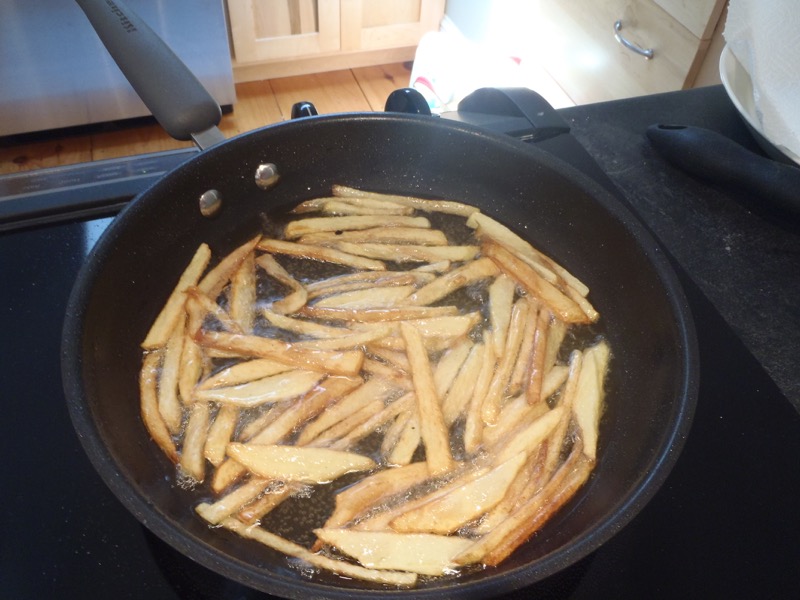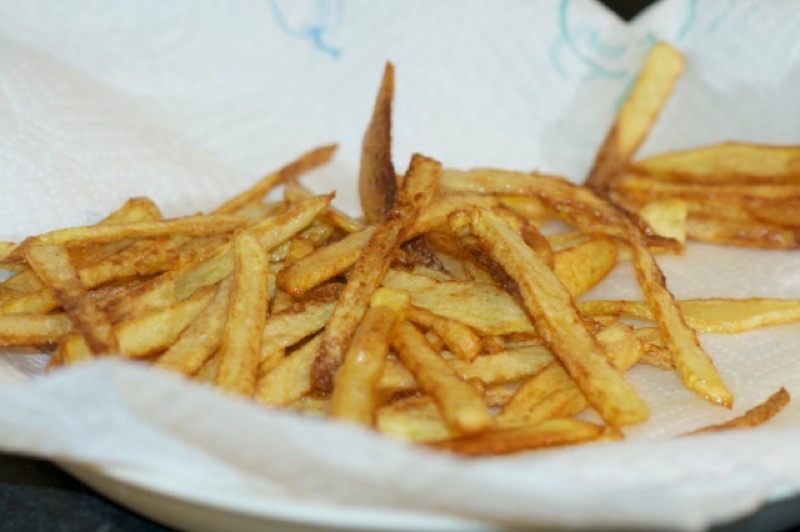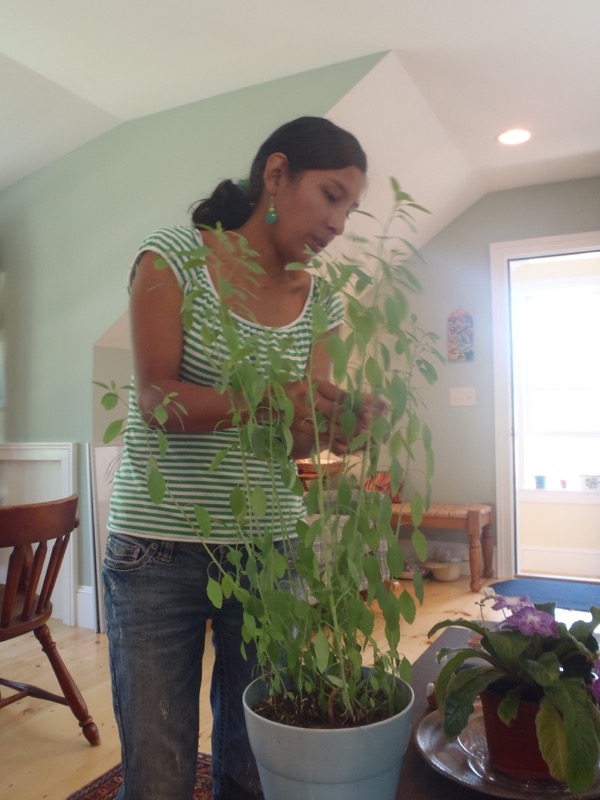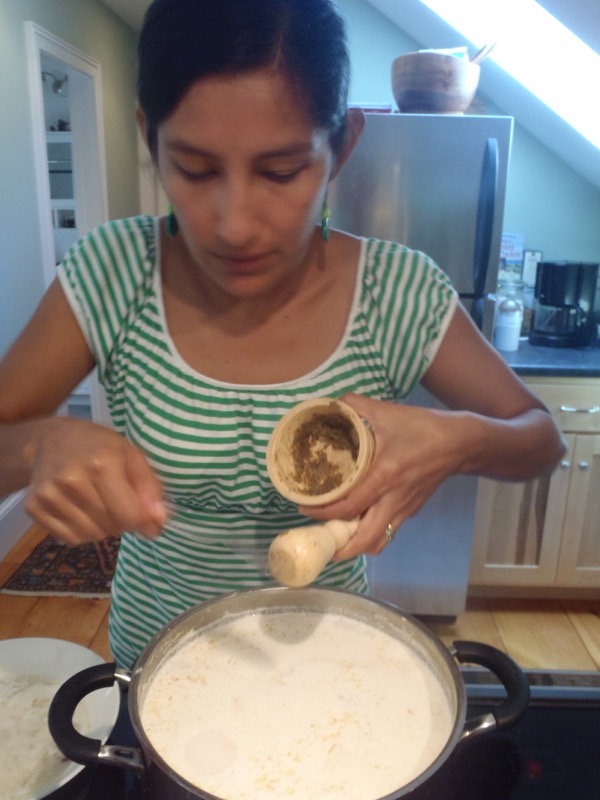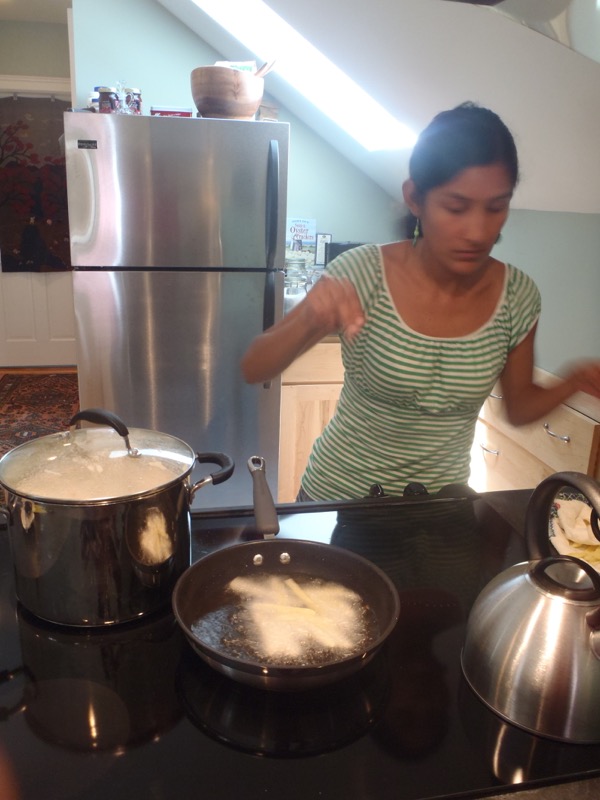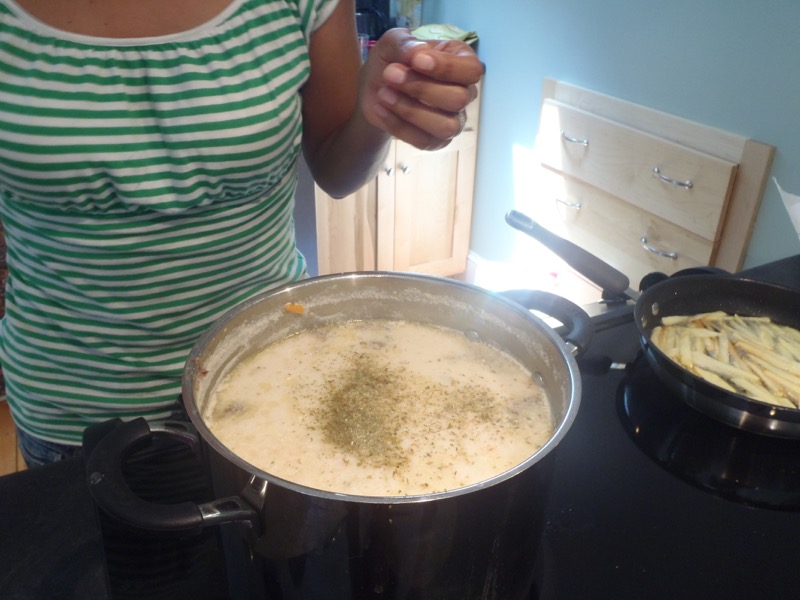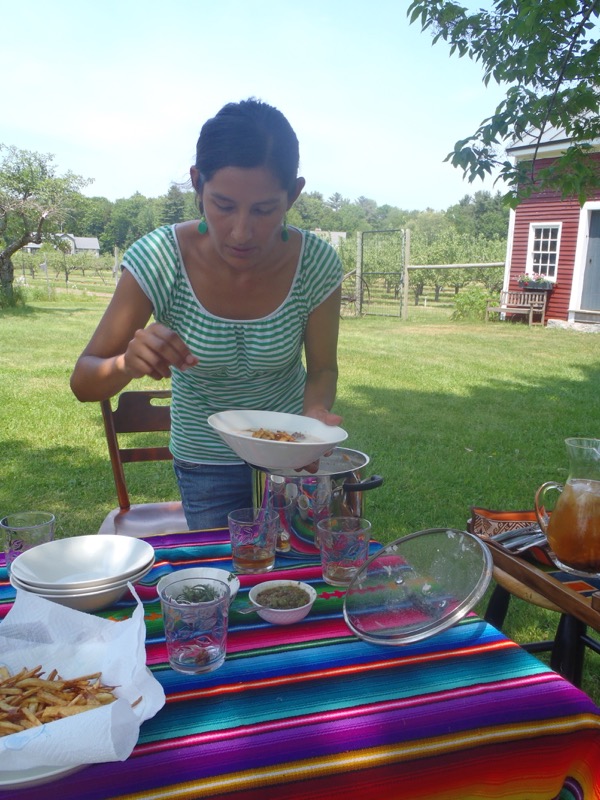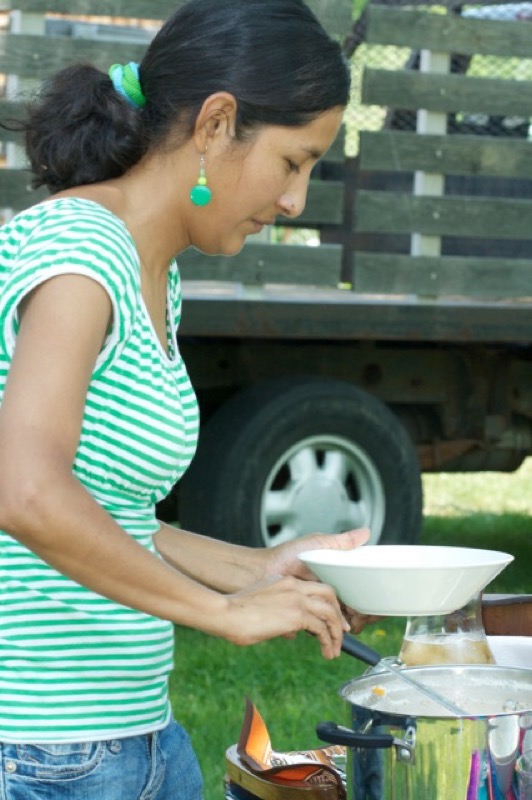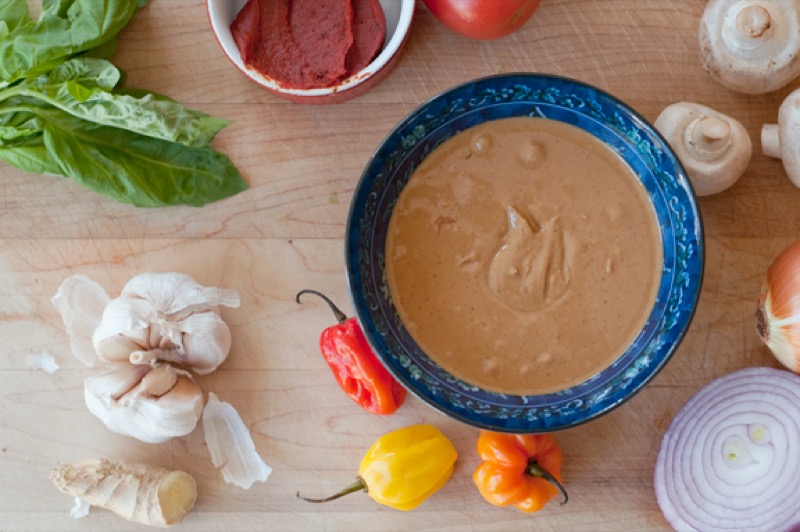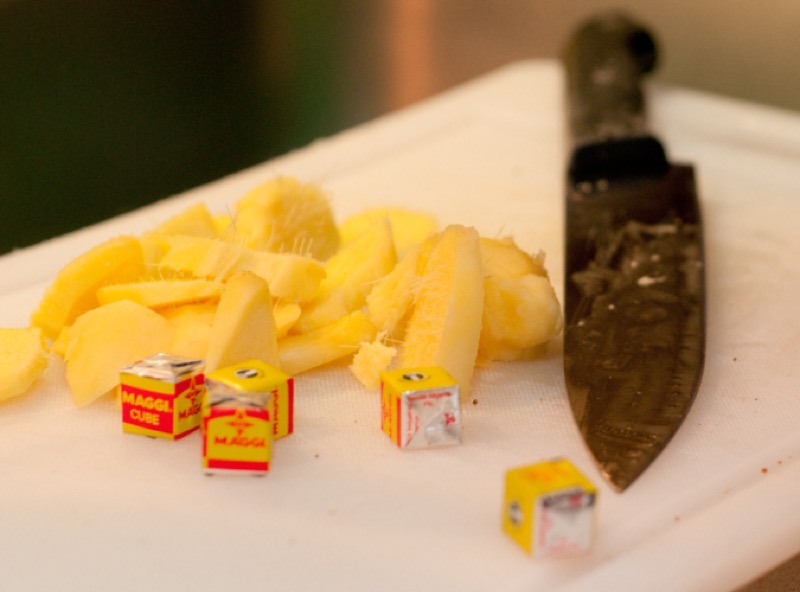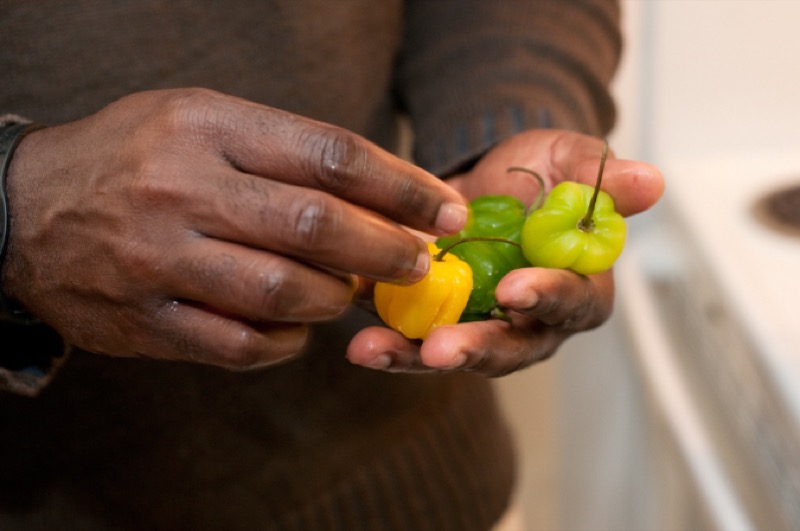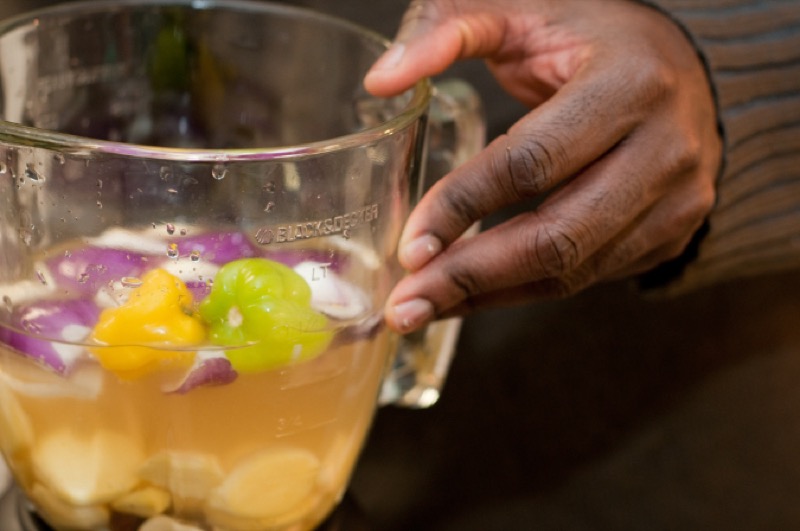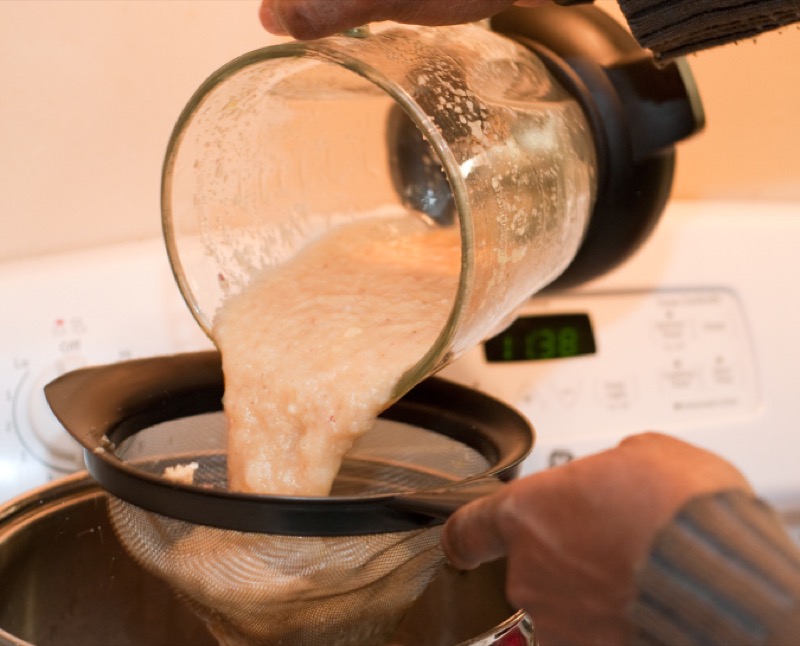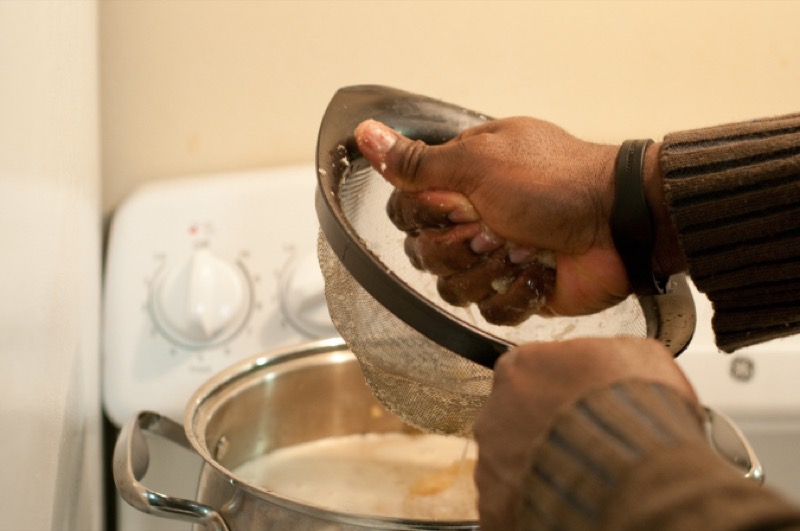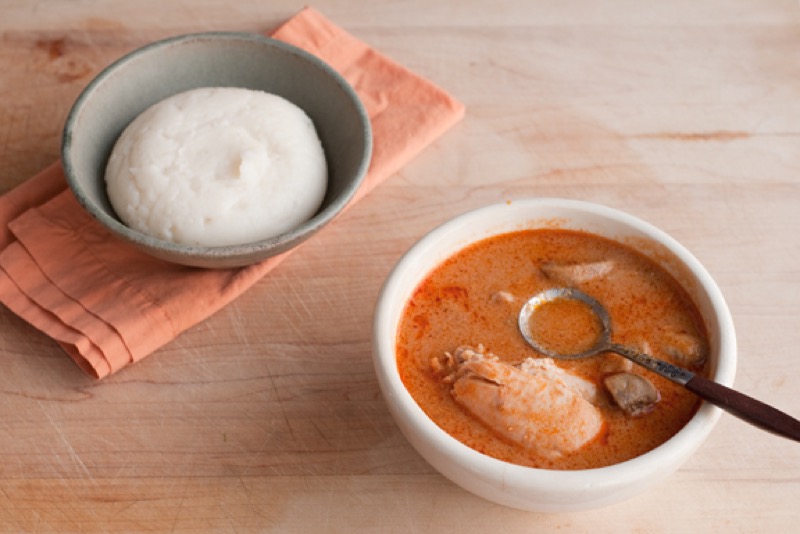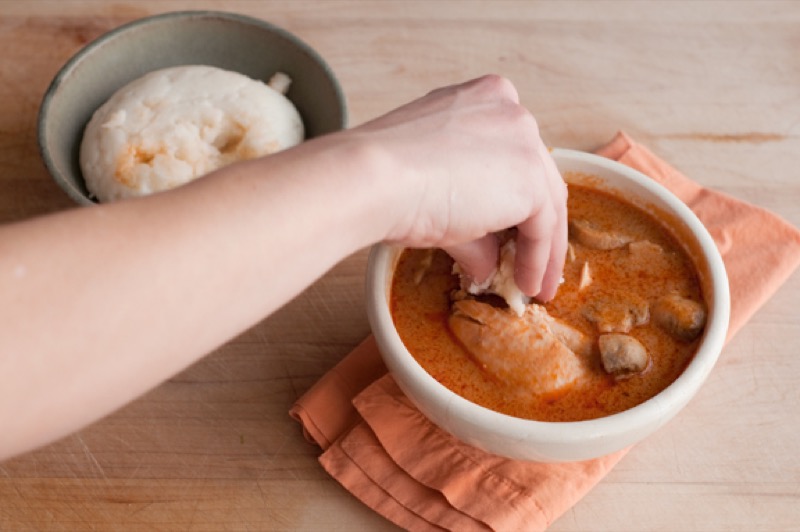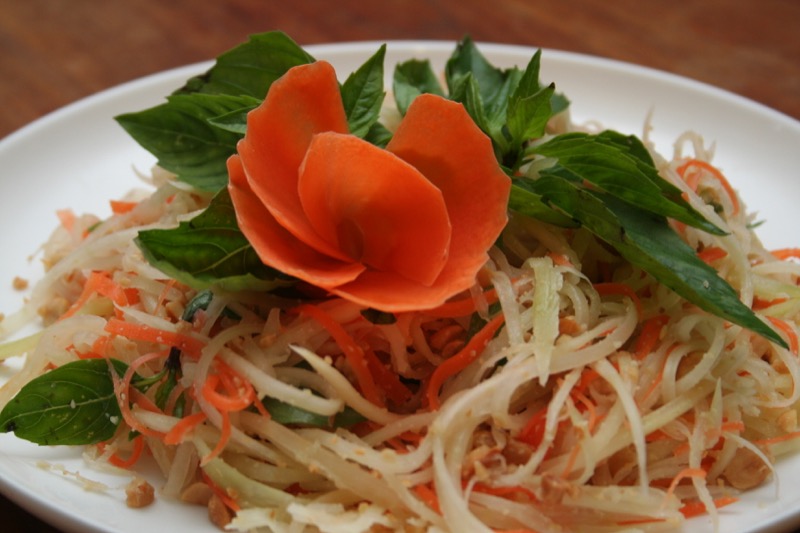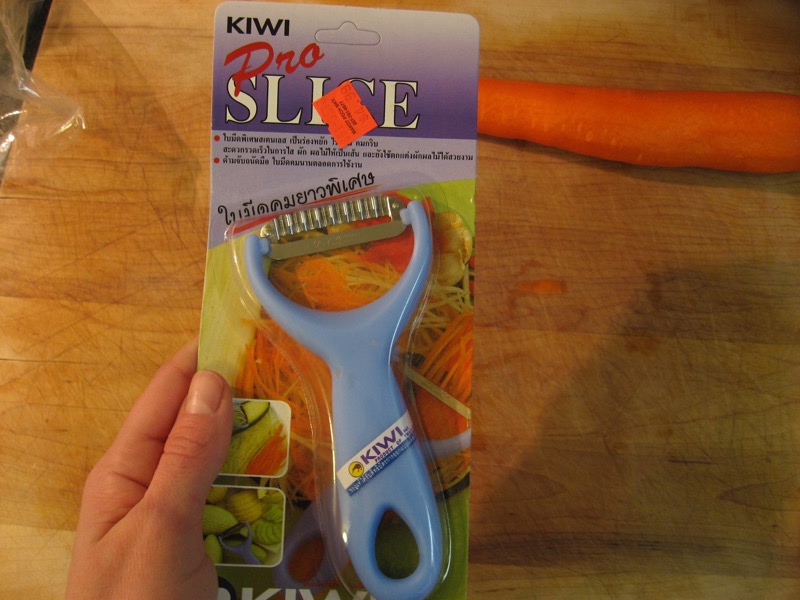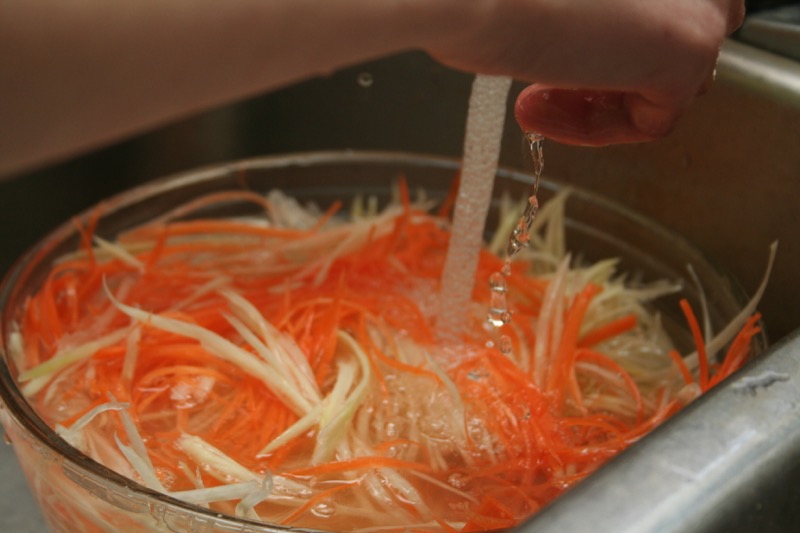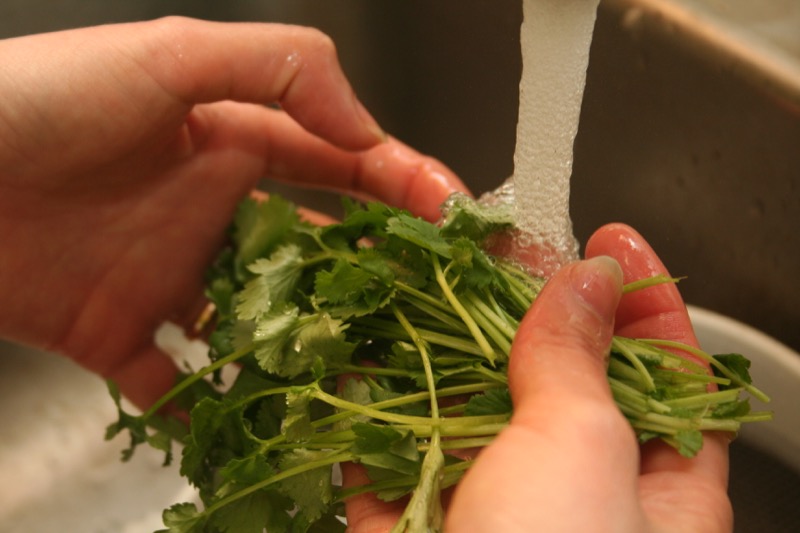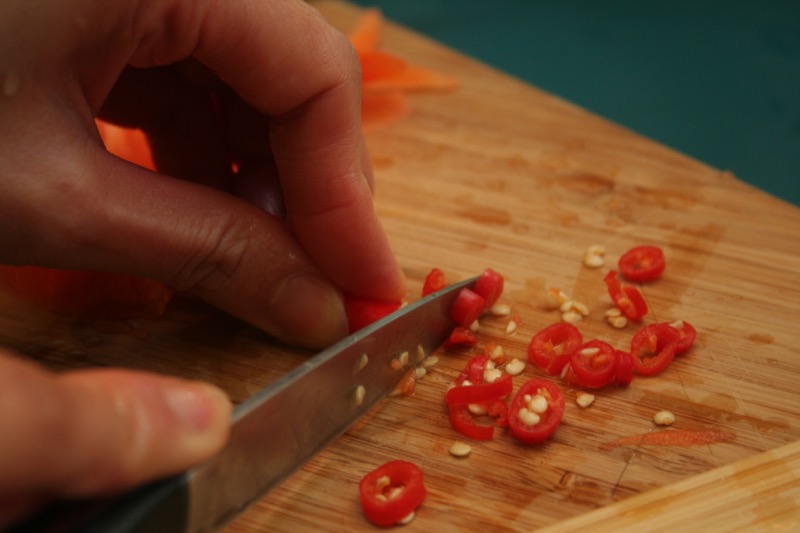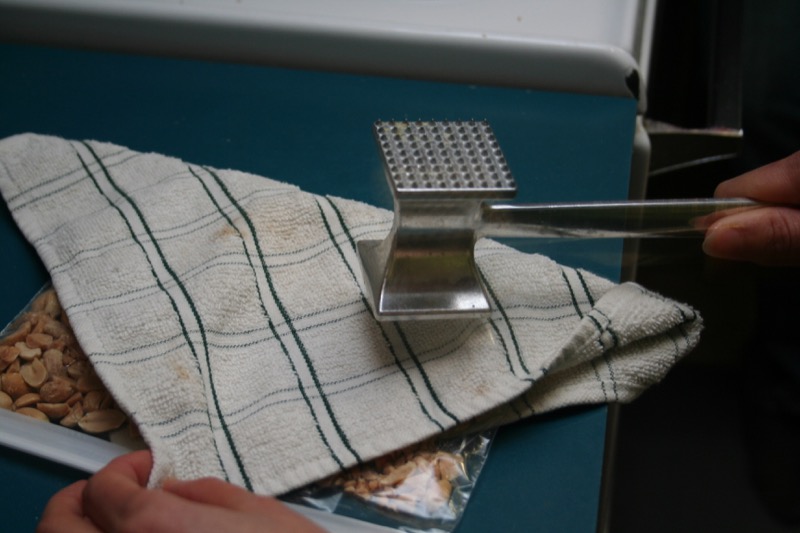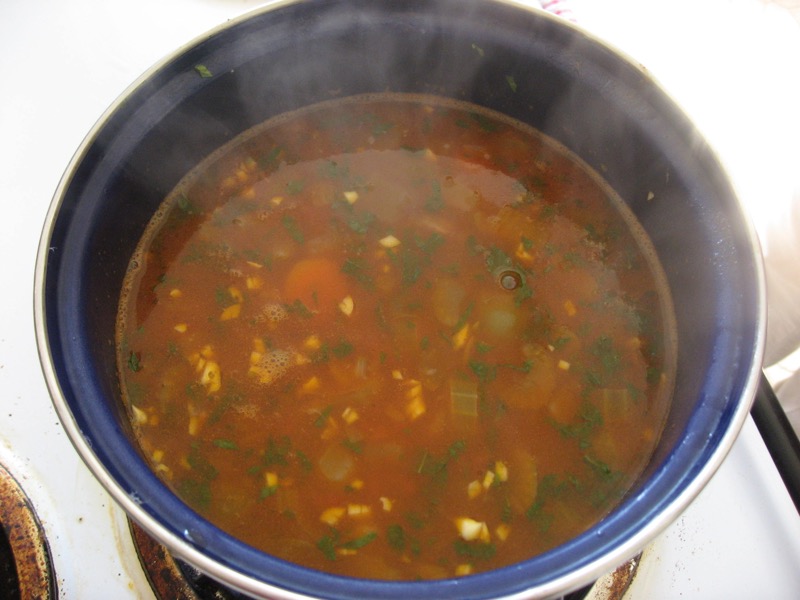With Yellow Rice and Red Sauce
As Ariane Kambu Mbenza from Kinshasa, Democratic Republic of the Congo, taught Lindsay Sterling in Yarmouth, ME, in May 2013.
Makes: 8 servings
Cooking Time: 1 hr 15 min + 6 hours marinating
Ingredients
- 2.5 pounds whole Tilapia with the skin on
- 1 Tbsp + 2 tsp + 1 Tbsp dried parsley
- 2 + 2 + 2 Maggi cubes (for no msg, use 1 tsp Better than Bouillon per Maggi cube)
- 2 Tbsp + 1/2 cup + 2 cups vegetable oil or red African palm oil
- 2 pounds carrots, peas, and green beans cut into bite size pieces (she used a frozen medley)
- 4 cups basmati rice
- 3 Tbsp butter
- 1 tsp black pepper
- 1/2 tsp super hot dried chili powder (optional)
- 2 tsp turmeric
- 1 onion, thinly sliced
- 10 cloves or 2 Tbsp chopped garlic
- 16 oz. tomato puree
Instructions
Day Ahead:
1. Marinate the fish. Cut heads off 2.5 pounds tilapia and slice across fish into individual portions. Rub fish with oil, 1 Tbsp parsley, and 2 crumbled Maggi cubes. Let marinate for 6 hours or over night.
Day of:
2. Shallow-fry the fish. Fill a fry pan 1/4 inch deep with oil. Bring oil up to medium-low heat. Gently place fish pieces in oil with plenty of space around each (if the pan is crowded, the skins won't get crispy). Let fish cook slowly (about 20 minutes) so you don't burn the outside while the inside is still raw. I would say she had her heat on medium low and her fish cooked for 10 minutes a side. The skins were golden all around and crispy. Delicious!
3. Saute rice and veggies with seasonings. Cover the bottom of a deep, large saute pan or soup pot (with lid) or rice cooker with oil. Add 2 pounds frozen vegetables (peas, carrots, green beans) and saute until thawed, or add fresh vegetables and cook for 2-3 minutes. Put 4 cups basmati rice in a bowl, cover with water, and drain. Cover with water again and drain. Add rice to the vegetables and stir in 2 tsp parsley, 2 crumbled Maggi cubes or 2 tsp Better than Bouillon, 1 tsp black pepper, 2 tsp turmeric, and 3 Tbsp butter. Stir and let cook on medium-low for 30 minutes, stirring every so often.
4. Boil the rice. Separately heat up about 7 cups of water water (for adding to the rice later). I think cooking the rice without the water allows the grains to soak up the oil, flavored with all the things you put in it. I also suspect that it helps the grains stay separate, and not get all mushed together. After 30 minutes, add enough hot water to cover the rice by 1/4 inch (this is less than you would for plain rice because those veggies don't suck up water, quite the opposite - they provide moisture!) Cover and let cook on low for 15 minutes.
5. Make the tomato sauce. Pour enough oil in a small saute pan to be about 1/4 inch deep and add sliced onion. Saute on medium-low for 20-30 minutes. Add 2 Tbsp chopped garlic. Continue cooking. You don't want to brown the onions, just get them softer and softer, so adjust your heat accordingly. Add 16 oz. tomato puree, 1 Tbsp parsley flakes, 1/2 tsp dried piri piri or birds-eye chili powder (lighter in color and much hotter than the chili powder at your American supermarket). As the onions continue to cook they will disintegrate into the tomato puree. Disappearing onions is the secret to the sauce! Add 2 crumbled Maggi cubes or 2 tsp Better than Bouillon. Sauce is done when onions have disappeared and the sauce is smooth. (FYI, this sauce is great with rice, fried, chicken, potato, seafood, anything!)
6. Serve a big pile of rice on half the plate. Next to that, a nice piece of fish, and a pile of the red sauce on the last third of the plate.

































